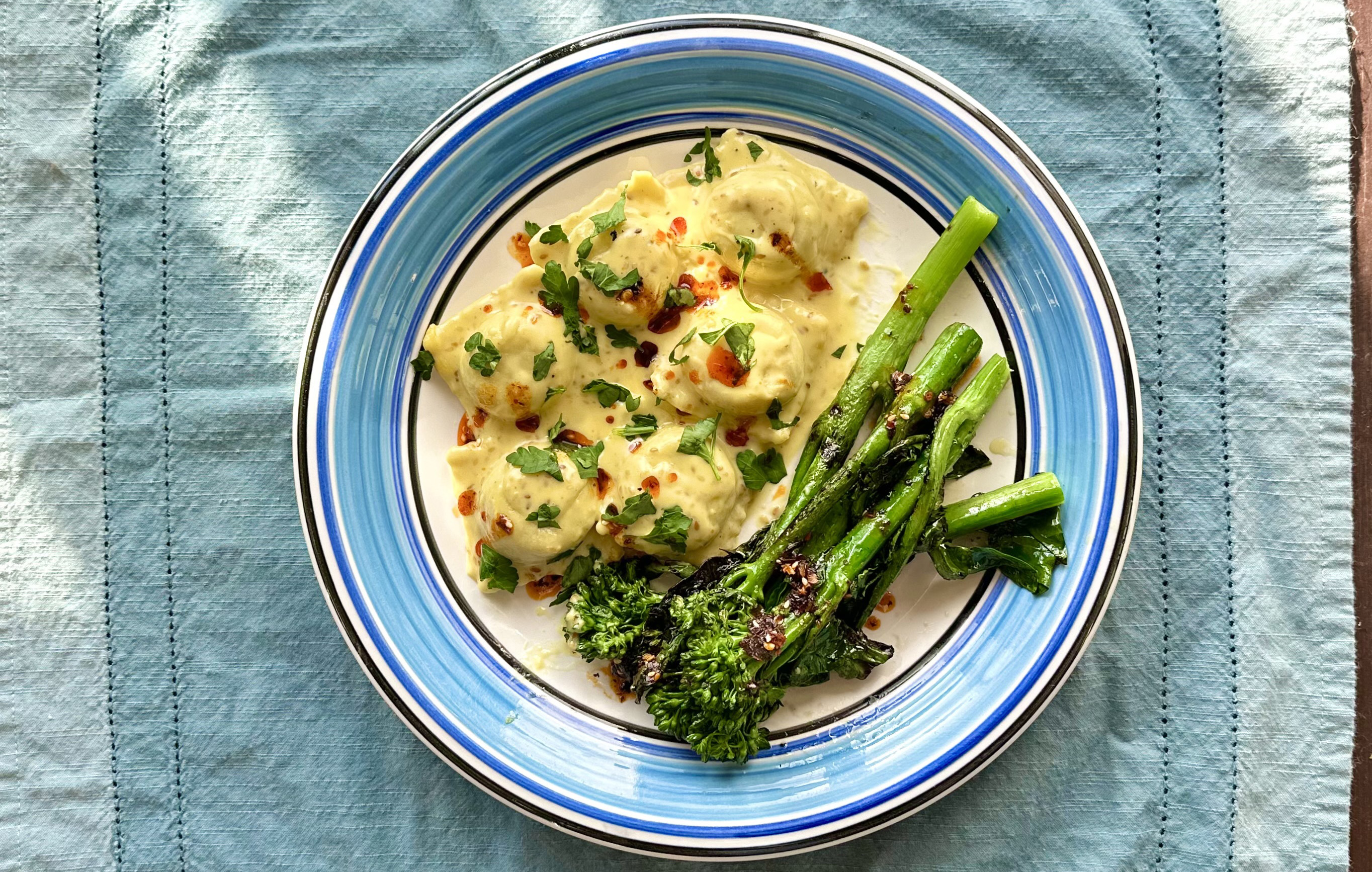
LOADING


Justin Avi and Julian Vallozzi's Pittsburgh dumpling stories begin in Western Pennsylvania coal mining towns.
Although their families came from wildly different places in Italy, their culinary evolutions follow similar arcs that included matriarchs who started food businesses to earn extra money, a generational distancing of migration history and their own resurgent embraces of Italian food culture.
Restaurants serving our favorite Italian ravioliHow to make ravioli at home
Avi's roots in the United States extend to his paternal great-grandparents, who came to Armstrong County from Italy's far northern coal mining region of Trentino-Alto Adige. His great-grandmother, Louisa, purchased a bar and restaurant to bolster her husband Fiorente's coal mine income and better feed the surrounding community. Fiorente left his job in the mine to run the bar.
“They had to be entrepreneurs. People didn't want to hire Italians, so they started their own businesses,” Avi says.

Avi's Tavern, established in 1928, still operates in Yatesboro, where it was run until 2003 by Justin's father, Joseph. Since then, it has been operated by longtime manager Mark Lucas, who purchased the tavern outright earlier this year. Nowadays, you'll hear classic rock and country tunes while eating chicken wings instead of opera and scratch-made mezzelune, a Tyrolean half-moon dumpling with a wheat and buckwheat flour skin that's similar to Tuscan ravioli.
“The food in the early days was influenced from all over the place. It was Northern Italian, like polenta, but if someone shot a deer they'd have venison polenta,” Avi says.
Vallozzi's grandmother, Helen, was born in the United States to parents who left the poverty-stricken Abruzzo region of Italy in the late 1800s. Her Calabrian-born husband served as a translator for the U.S. Army during World War II. They were proud of their origins yet eager to assimilate into their new country, leaving much of the family's native history forgotten.
“They spoke Italian, but only behind closed doors. They would always just say, ‘We're in America now,' and didn't want to share. Maybe it's because of how poorly Italian immigrants were treated when they came over here. Maybe they didn't want their descendants to suffer the same things,” he says.
Nevertheless, the Vallozzi family never stopped celebrating Italian food.
“That's just the Italian way. The lifestyle revolves around food, family, companionship,” Vallozzi says.
His grandmother prepared and sold drop-dumpling gnocchi from her home kitchen to feed neighbors unhappy with the food sold at the town's company store. She later expanded into a deeper menu of dishes offering comfort food from their shared homeland.
In 1977, Vallozzi's father, Ernie, took the family food business to its current location in Greensburg, and Julian opened a Downtown Pittsburgh offshoot in 2012.
Each step of the way, the cuisine became more elegant.
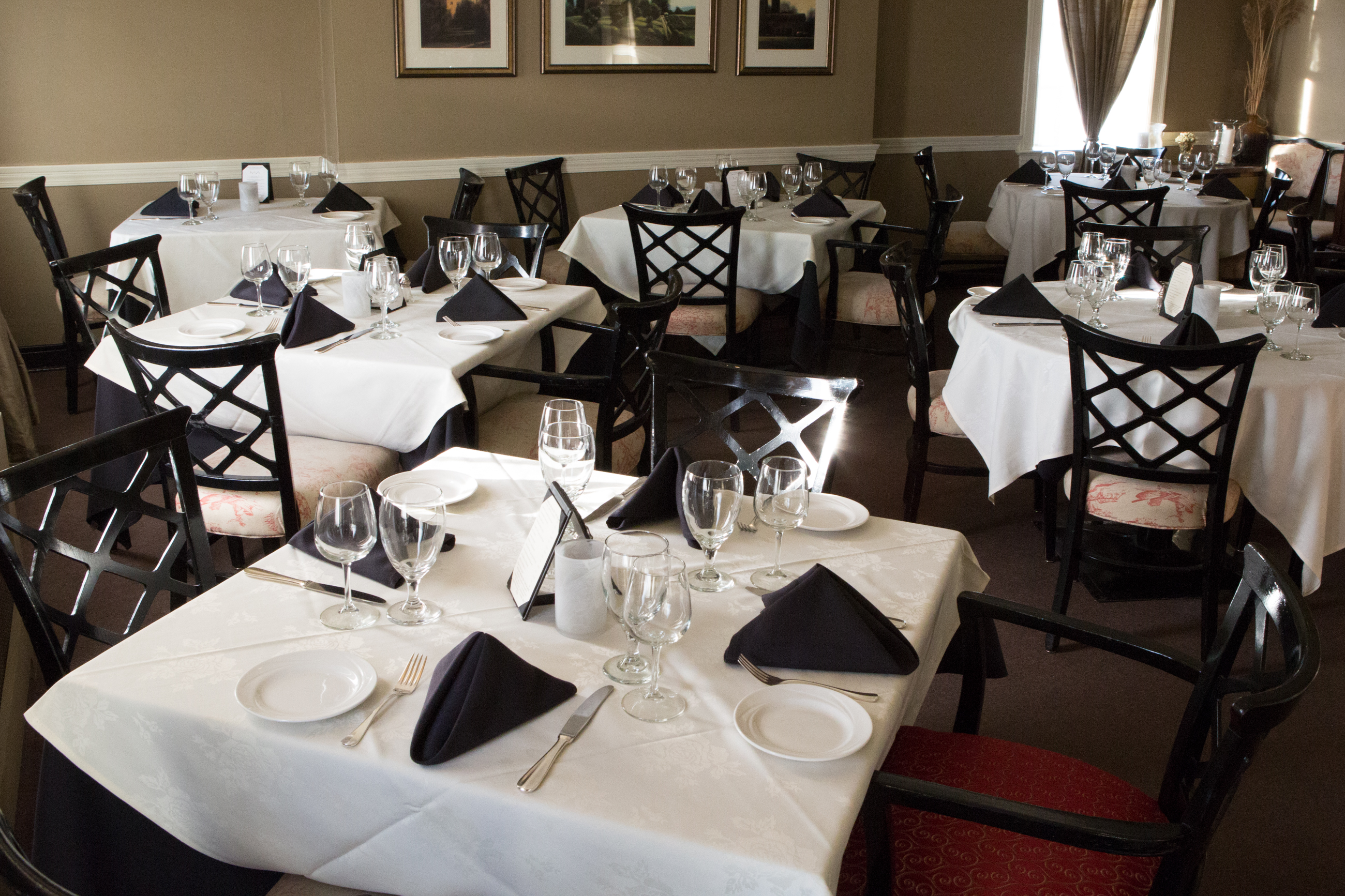
With 125-plus years of history, Pittsburgh tells an ever-evolving story of Italian dumplings. Restaurant operations in the region showcase a diversity of preparation, and some can command a significant premium well above other regional dumpling offerings.
Italy-born Alex and Louis Tambellini opened restaurants Downtown and on Mount Washington in the 1940s, establishing a celebrated Pittsburgh restaurant family known for drawing Italian cuisine into the fine dining spectrum.
Joseph Tambellini, a third cousin of the brothers, is the last in his lineage to operate in the area, opening his eponymous restaurant in Highland Park in 2007. There, ricotta-stuffed homemade cheese ravioli served with tender meatballs and fennel-forward sausage mingle with garlicky tomato sauce. It goes for $39 a plate, a price point that could feel jarring elsewhere, but fits the atmosphere of the white tablecloth establishment.
Tambellini's menu represents a cross-cultural exchange of Italian and American dining, where you'll find an airy, crisp version of the family's celebrated fried zucchini sharing space with a grand grilled veal chop.
Italian cuisine in Pittsburgh stands out due to its blend of immigrant traditions, pop-culture influences and the enduring presence of multigenerational restaurant owners.
“We grew up with canned Chef Boyardee. It wasn't necessarily good, but it was accessible and you could have it whenever you wanted,” says Avi. “It probably took away some of the specialness that ravioli came with originally when people first opened Italian restaurants. Now, we're trying to bring that back.”
Avi, founder of Saint Ravioli in Bloomfield, represents a newer generation of Pittsburgh dumpling makers. From his storefront in Pittsburgh's historic “Little Italy,” he offers a rotating monthly menu of various ravioli.
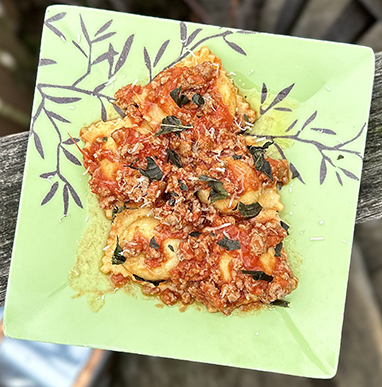
Faint traces of Bloomfield's Italian restaurant heyday remain. Still, the wider region's deep ties to a food culture with thousands of years of history mean Pittsburgh has a strong diversity of Italian dumplings.
Or, as they're most often known to those of Italian heritage (making up 14.6% of Allegheny County's current population, according to the U.S. Census Bureau): stuffed pasta.
“We might not have been the first to make dumplings,” Avi says. “But I bet we're the loudest about it.”
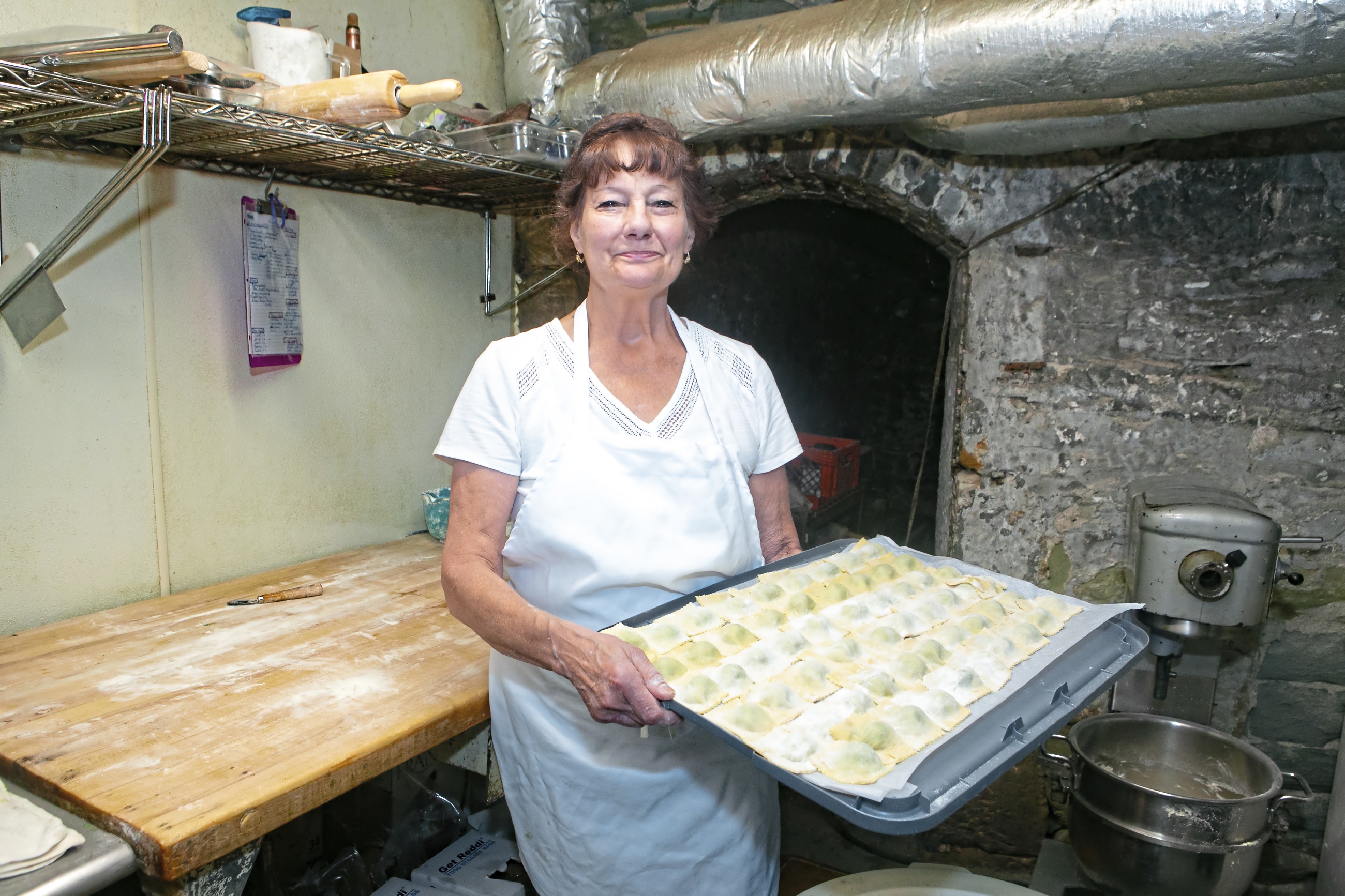
The earliest known reference to ravioli is a recipe for a broth-boiled dumpling filled with herbs and cheese in the 14th-century letters of Francesco di Marco Datini, a merchant from the Tuscan city of Prato. Cooks throughout the regional states that would later merge to form a unified Italy in 1861 crafted myriad stuffed pasta shapes, from tiny tortellini to massive Neapolitan caccavelle, known in English as stuffed shells.
The broad embrace of tomatoes as an ingredient in the mid-1500s changed the course of Italian food culture, including how some dumplings were sauced, though butter and herbs continued to reign supreme in the north. Soft cheese jazzed up in various ways remains the primary filling, though meat and sometimes vegetables also come into play.
“It's amazing to think that someone came up with the idea of putting this much egg and this much flour together to turn it into a dough that's so beautiful and workable. That's all it is. It's so simple,” says Carla Branduzzi, the 70-year-old head pasta maker at Piccolo Forno in Lawrenceville.
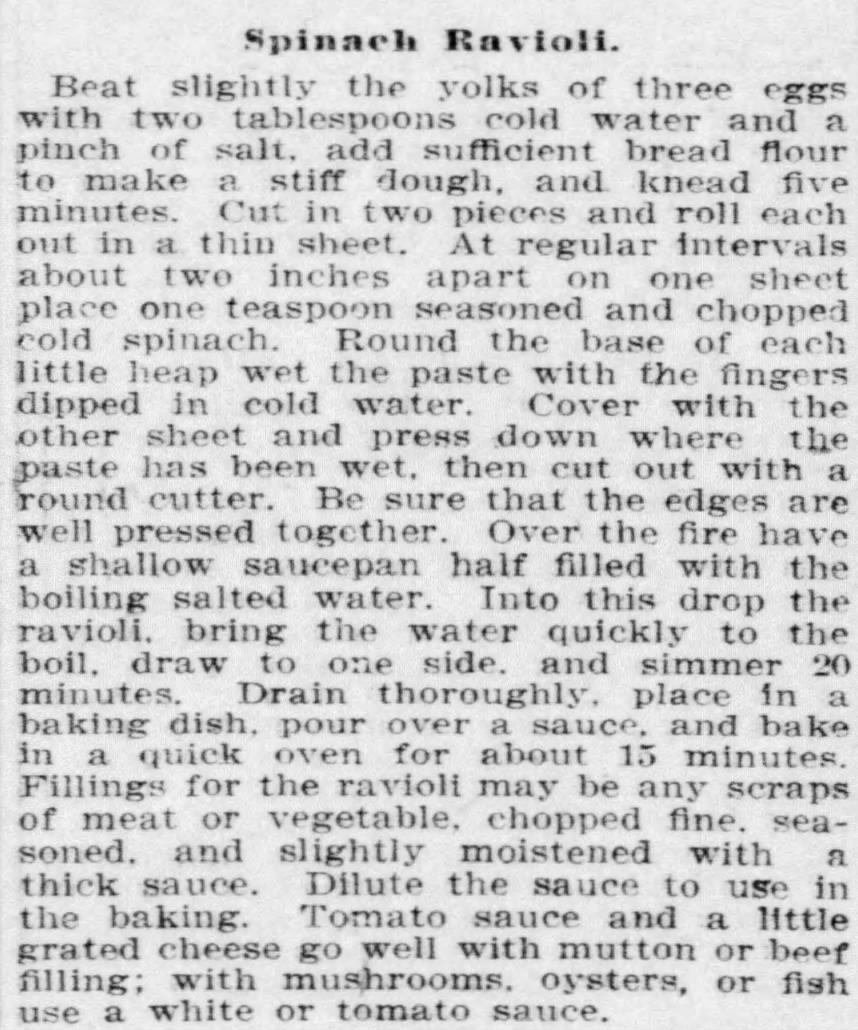
The first recorded mention of Italian dumplings in Pittsburgh is a recipe for spinach ravioli printed in an April 1904 edition of the Pittsburgh Press. There's no context attached to the recipe, which is presented alongside waffles in a column called “Some Good Recipes.”
In December of the same year, the Pittsburgh Weekly Gazette published a story headlined “Italy's Sons Are Kitchen Kings.” The smaller headline notes, “What they will prepare for Christmas dinner will be strange to Americans.”
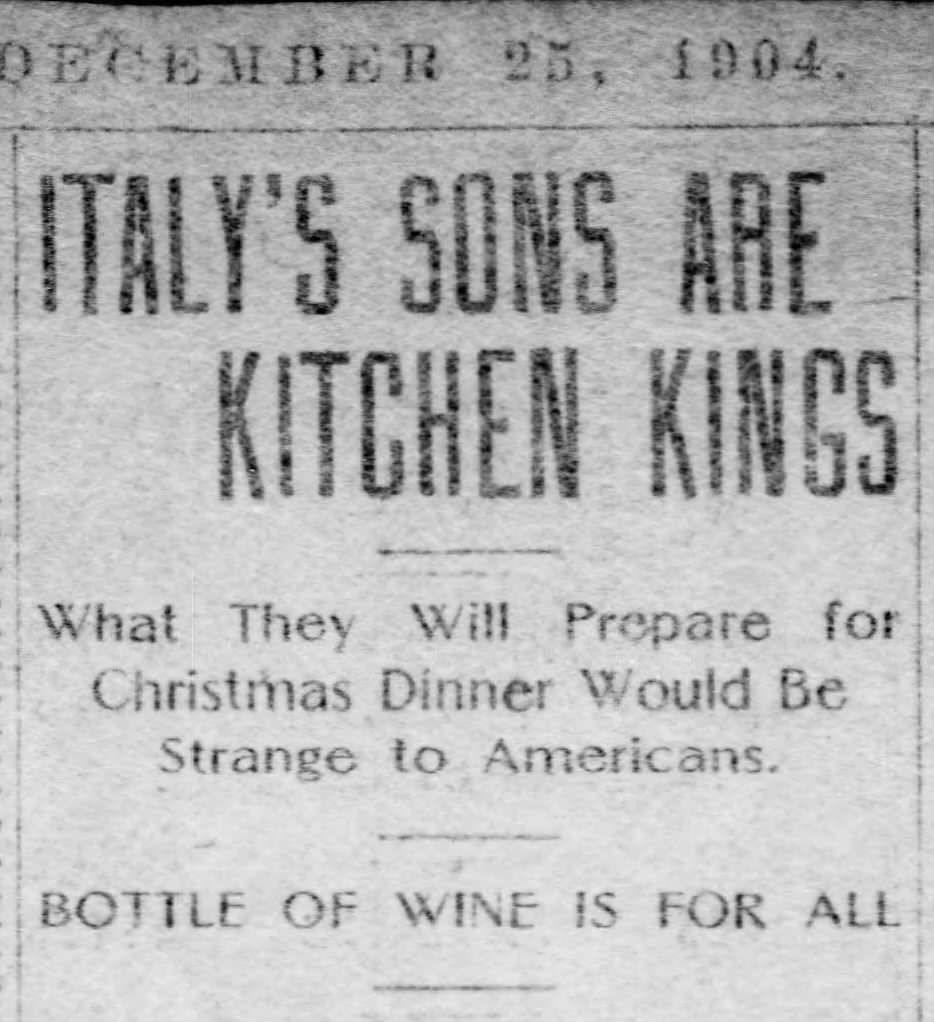
“Then there are the ‘tortedelinis.' They are sort of like a pastry, something like macaroni, only different.”
The writer says that these dumplings are made in a strong broth, and the dish is so tasty it's worth traveling a long distance to eat.
“‘Ravioli, or homemade tortedelini, are another favorite.”
Stuffed pasta likely had been cooked in home kitchens for at least 30 years by the time the two articles were published, as migration to Western Pennsylvania from Italy began en masse in the 1880s. Waves of migration (primarily from Southern Italy) continued for the next hundred years, with dumplings riding long waves of ethnic discrimination giving way to cultural acceptance and, eventually, celebration amid back-and-forth immigration between the two countries.
In Pittsburgh, you'll find classic and updated Italian American dumplings that reflect the passing of flavors and history from generation to generation, often augmented by locally available ingredients. There is the wonderful “red sauce” tradition that is distinctly American-Italian. More than ever, other dumplings reflect longstanding and contemporary Italian dumpling culture.
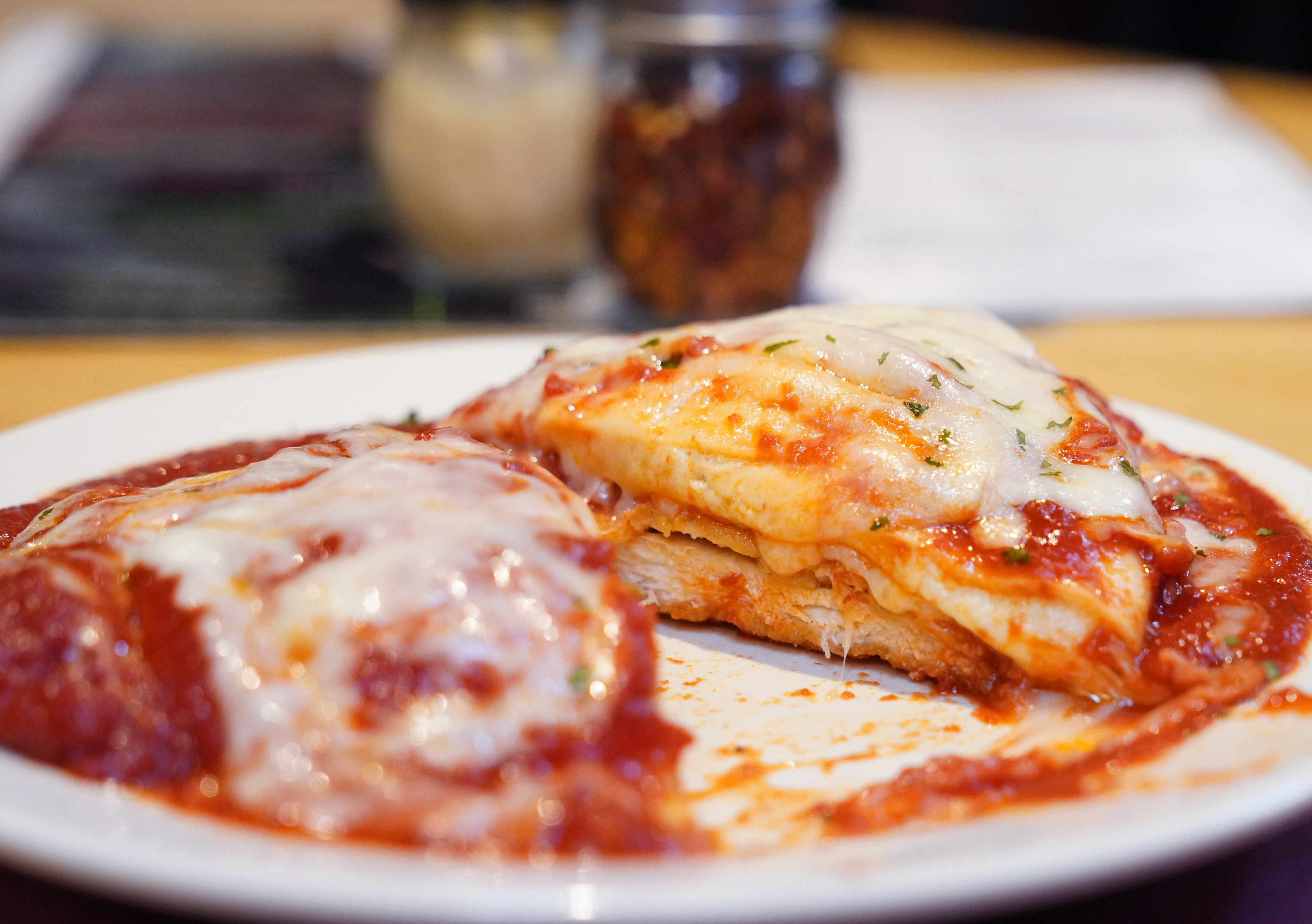
The saucer-sized cheese ravioli at Tillie's tenderly tug when you bite them. Inside the straw-colored skins, a generous portion of a tangy, sweet and savory cheese blend gently oozes out to mingle with an aromatic, family-recipe tomato sauce.
These delightful dumplings are the staple of the 62-year-old McKeesport restaurant. Every one is crafted by Dragicia “Carla” Calvitti, 85, in the kitchen of the beloved establishment in the former steel town once known as “Tube City.”
“It's special because I make it from scratch, and people can tell the difference between that and something that's store-bought. Everything we serve here is scratch-made.” Calvitti says. “Except for the french fries. Those are frozen.”
Frozen fries aside, the restaurant serves what a person might think of as a classic “red sauce” menu, which includes a greatest hits roster of Italian-American craveables such as meatballs and house-made spaghetti, lasagna and chicken piccata.
There's even a dumpling dish encapsulating an ambrosial, albeit cliche, snapshot of Italian cuisine in Pittsburgh: parmioli. With this innovation, one of Calvitti's generous ravioli is set atop a preparation of chicken Parmigiana, and the whole delightful concoction is baked together in the oven.
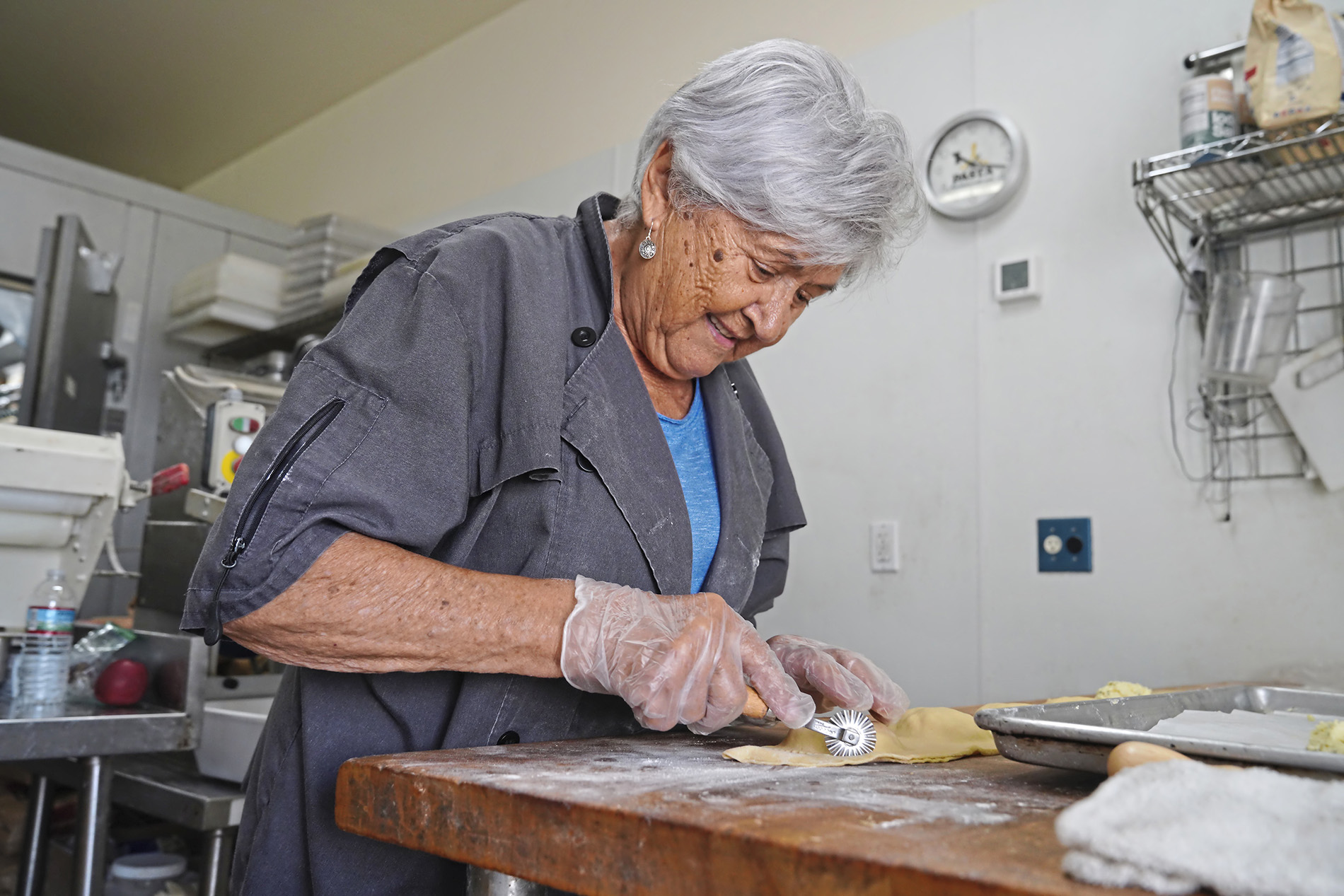
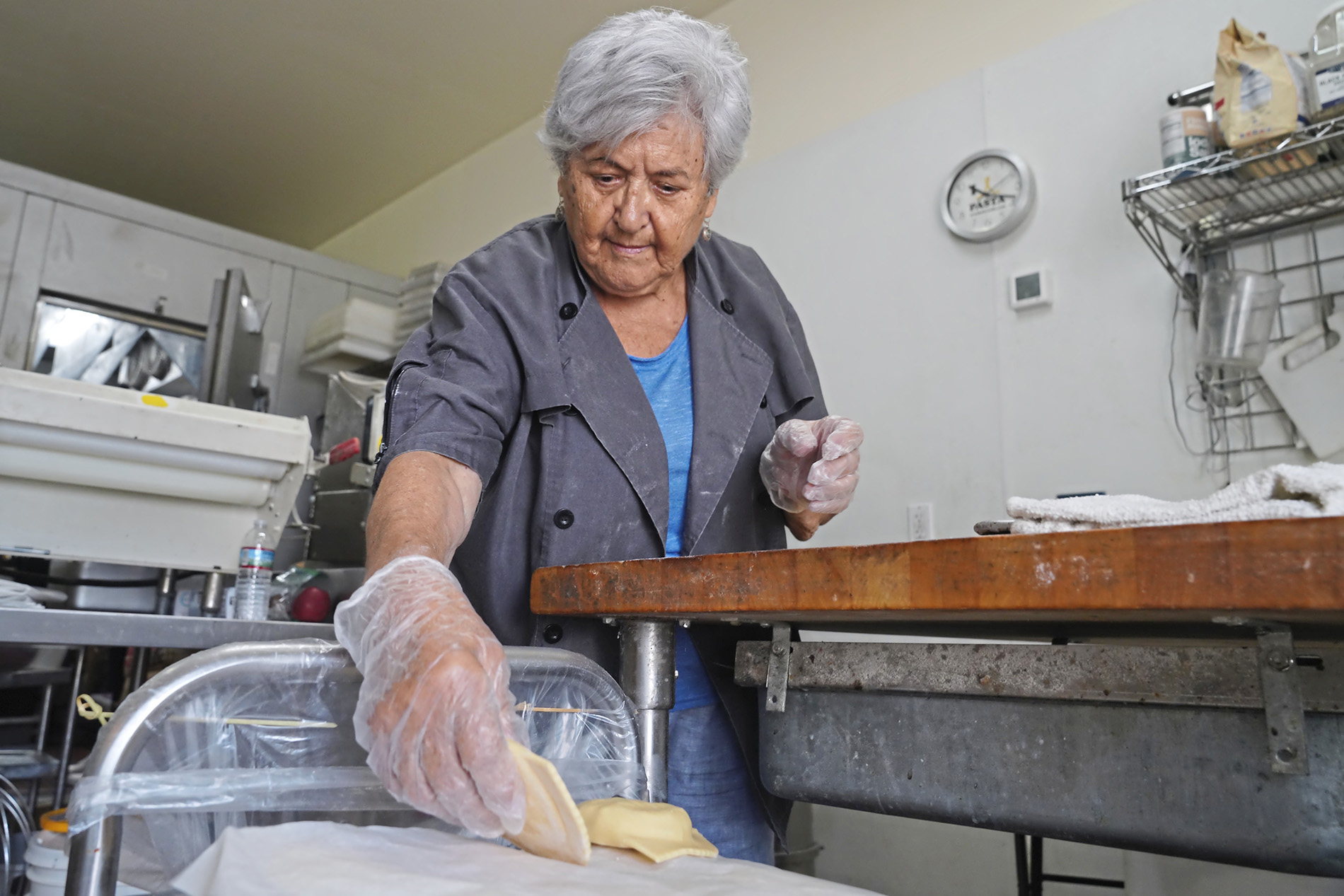
Calvitti, born in Belgrade, Serbia, in 1939, moved to McKeesport with her Italian husband from Rome in 1982.
“We had a nice big tradition of my mother cooking Serbian dinner in my family. All the women in my family are excellent cooks,” she says, noting that she wasn't much of a cook in her youth.
As proud as she is of her Serbian heritage, she sees the Italian kitchen as a global powerhouse.
“This is the best, Italian. Rome, Naples, Firenze and Venezia — each variation is different because of their climates,” Calvitti says. “This, Rome, is where I learned how to be a chef.”
She emigrated without knowing any English — in fact, it's the seventh language she became fluent in. She figured she'd learn it when she took a job as kitchen staff at Tillie's.
“When you work, you learn English. But I learned the wrong English because they all spoke Italian, too,” she says, laughing.
Much like the language spoken in the kitchen, Calvitti says the restaurant's cuisine embraced a mishmash of pan-Italian and American ingredients and techniques. Over the years, she began to incorporate techniques that she learned in Italy, such as producing those giant ravioloni, to pair with dishes like the sausage filling in another ravioli, which tastes just like an ever-popular stuffed banana pepper.
“My story isn't anything special. It's just different,” Calvitti says. “I work hard. I like to work and I like to share the work that I do.”
A quirk that makes Italian dumplings in Pittsburgh so dynamic is non-linear migration. Domenic Branduzzi, chef/owner of Piccolo Forno in Lawrenceville since 2005, was born in Lucca, a small city in Tuscany, Italy. His mother, Carla, is a native of Pittsburgh.
“Most people my age and even older were already second- or third-generation Americans. I couldn't relate to that 100% because I grew up straddled between both worlds. What people were calling Italian food over here, red sauce, chicken Parm, veal Marsala, meatballs, food that I love too, wasn't something I grew up eating,” he says.
"We had ravioli of course, but filled with spinach and finished in a sage butter sauce instead of with a meat sauce you'd cook all day. Still simple, still rustic, but from a different place than what was served at most restaurants in Pittsburgh."
Carla was 28 when she moved with her husband, the late Antonio Branduzzi, to his hometown in Tuscany.
“I had to do something there to survive, so I took the best that Italy had to offer, the food,” she says, noting that she returned to Italy to continue her culinary studies in 2004.
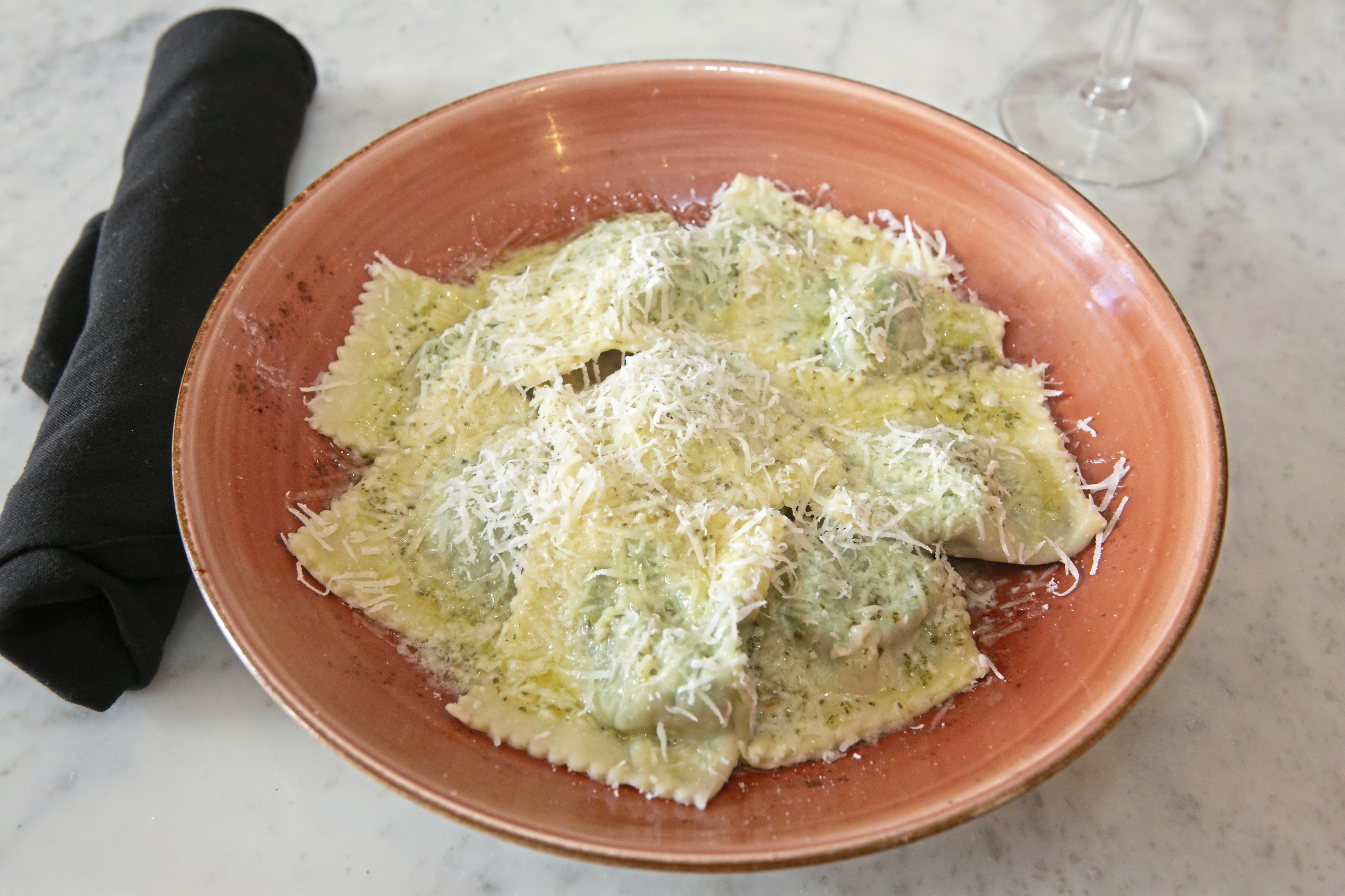
“That's when I really refined my pasta-making.”
She and Antonio, who studied baking during their time together in Lucca, returned to Pittsburgh in 1987 and opened a bakery and luncheonette called Il Piccolo Forno in 1992.
“It didn't quite translate to people's expectations at the time, even though what they were making was very common in northern Italy,” their son says. “And she was making rabbit dishes, boar dishes, chicken liver pate that were also common.”
Antonio passed away in 2007, and Carla, who already was helping Domenic make pasta at his Lawrenceville restaurant, moved to full time there.
At 70, she still makes 40 pounds of pasta nearly every day, including two or three types of dumplings. That spinach-and-sage ravioli that Domenic grew up with is standard on the menu, as is a tortelli with a pork and beef filling and an umami-rich Tuscan-style Bolognese.
“There's a nostalgia for what an Italian restaurant is supposed to be. Think about Carbone's. They've latched onto that idea of a classic red sauce joint and exploded across the world,” Vallozzi says. “But we don't just want to say ‘this is what grandma did' and stick there. Everyone loves cheese ravioli, but if you only have that it might be nostalgia going too far. You have to break away a little bit and modernize.”
Vallozzi's Pittsburgh, his sophisticated Downtown spot, serves cheese ravioli made with the same recipe his grandmother used back in coal country. Other dumplings on the menu are decidedly less humble. This spring, he served delicate, silken pasta stuffed with an earthy mixture of ricotta, porcini mushrooms and black truffle with a rich ragoût of braised pork.
“It's about what you do with the ingredients you have available to you,” he says. “I have to think if she had access to porcini mushrooms, she would have worked wonders with that because this is the Italian way.”
Avi takes that philosophy of transformative tradition even deeper.
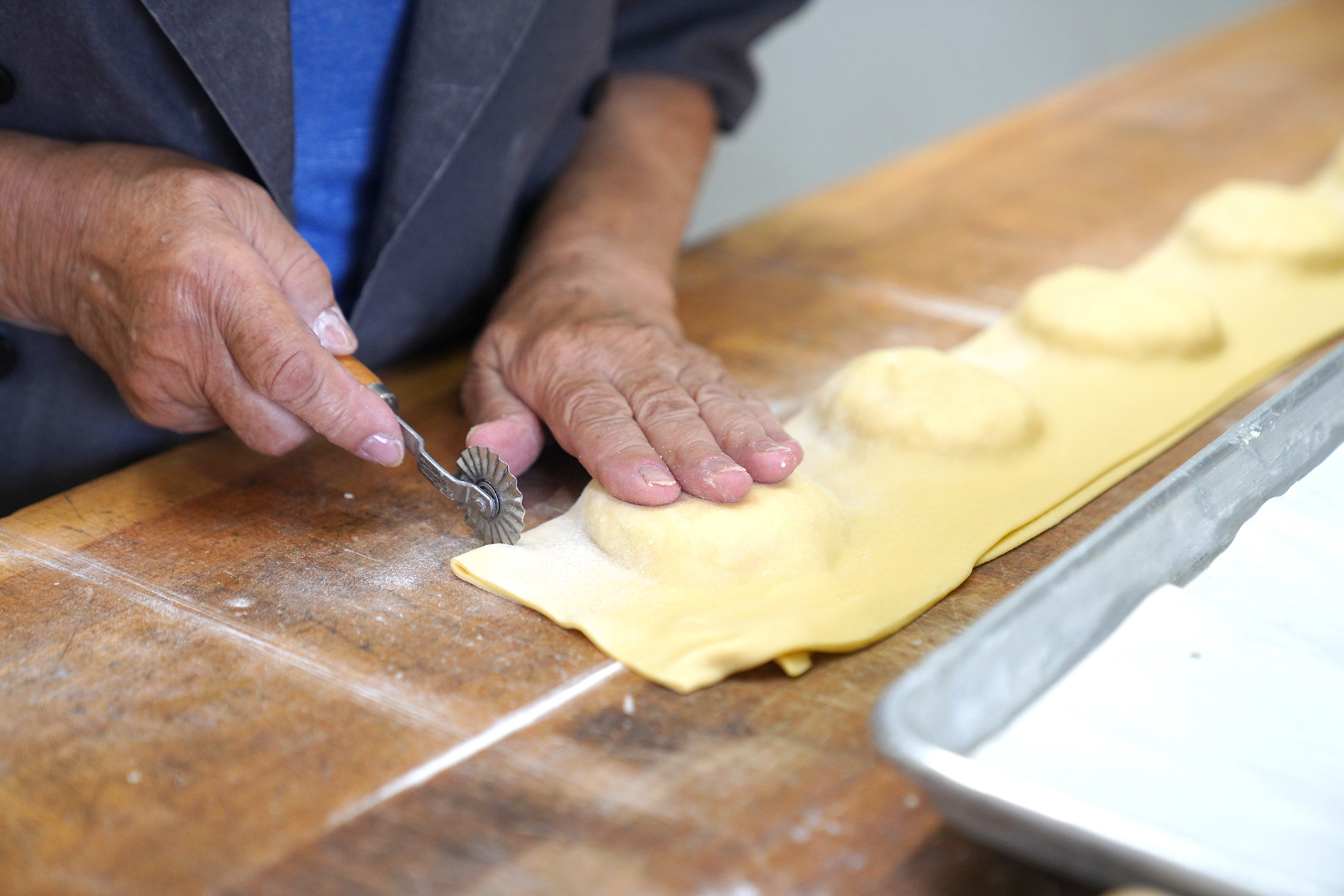
He sticks to tradition with his pasta, hand-making each batch with a mix of semolina and bread flour and lots of eggs, just like his grandparents would have made them. Avi also believes that ravioli fillings should always include cheese. From there, he says, “This is a vessel. It's something I can be creative with and experiment with fillings.”
Avi finds inspiration in sandwiches. In May, he prepared an unctuous porchetta filling, bolstered by bitter broccoli rabe and punchy provolone echoing Italian roast pork sandwiches popular in Eastern Pennsylvania. Sometimes, he'll pull from his family's history as tavern operators, paying homage to popular bar food like Buffalo chicken with a filling of slow-cooked chicken thighs, butter, a blend of hot sauces and three cheeses.
He says other dumpling cultures have informed his cooking techniques. His wedding soup filling, for example, is influenced by xiao long bao.
“I used to think they just froze the soup before they put it in there as a filling, and then I learned how they work with gelatin. That opened up new doors for me,” he says. “There is a connection between those cuisines for sure.”
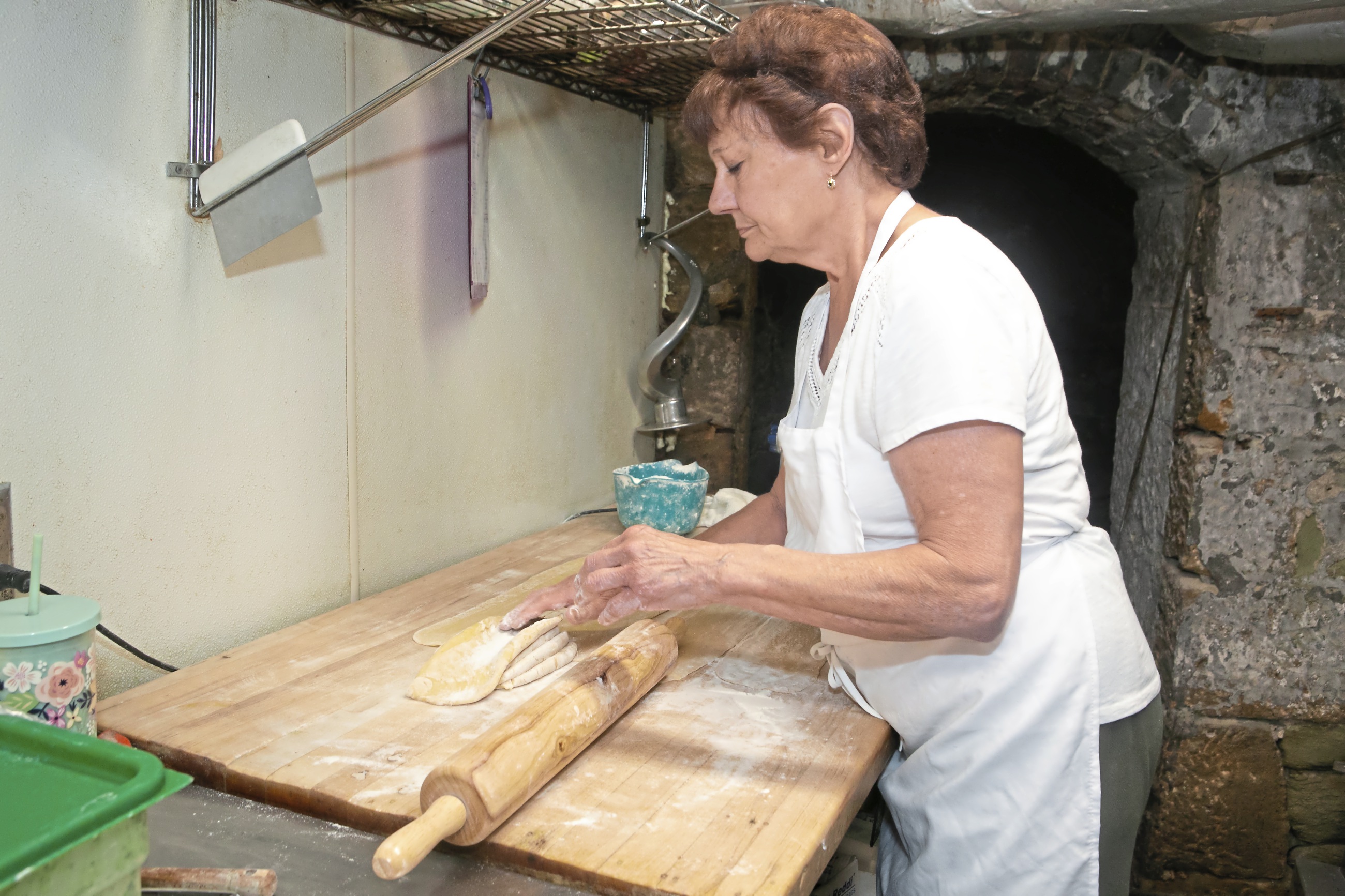
Although the popular lore of the trader Marco Polo introducing pasta to Italy in the 13th century is widely considered apocryphal, the two cultures have exchanged goods and knowledge, which at some point included a shared love of dumplings, for as long as 2,000 years.
The balancing act of assimilating new techniques and ingredients with a sense of comfort and pride is an ongoing signature of Italian stuffed pasta in Pittsburgh.
At Piccolo Forno, Carla Branduzzi still plays around from time to time. In early May, she prepared ravioli with spinach-dough pasta and a filling with Appalachia's celebrated allium, ramps, an ingredient Domenic and his culinary team have long used on other parts of the menu.
"I never used that spinach dough for a filled pasta. We made a Parmesan sauce with it. It was so pretty,” she says.
Hal B. Klein: hklein@post-gazette.com
Where to get Italian dumplings in Pittsburgh
The fantastic thing about Italian dumplings in Pittsburgh is that there are many types to choose from. We tend to favor ravioli, but you'll find shapes such as agnolotti, pansotti and tortellini too. The preparations range from light and airy to sturdy, some dressed with garlic-laced tomato sauce and others with herbaceous butter.
This list of 10 of our favorites is far from exhaustive. Instead, consider it an excellent place to start your Italian dumpling journey.
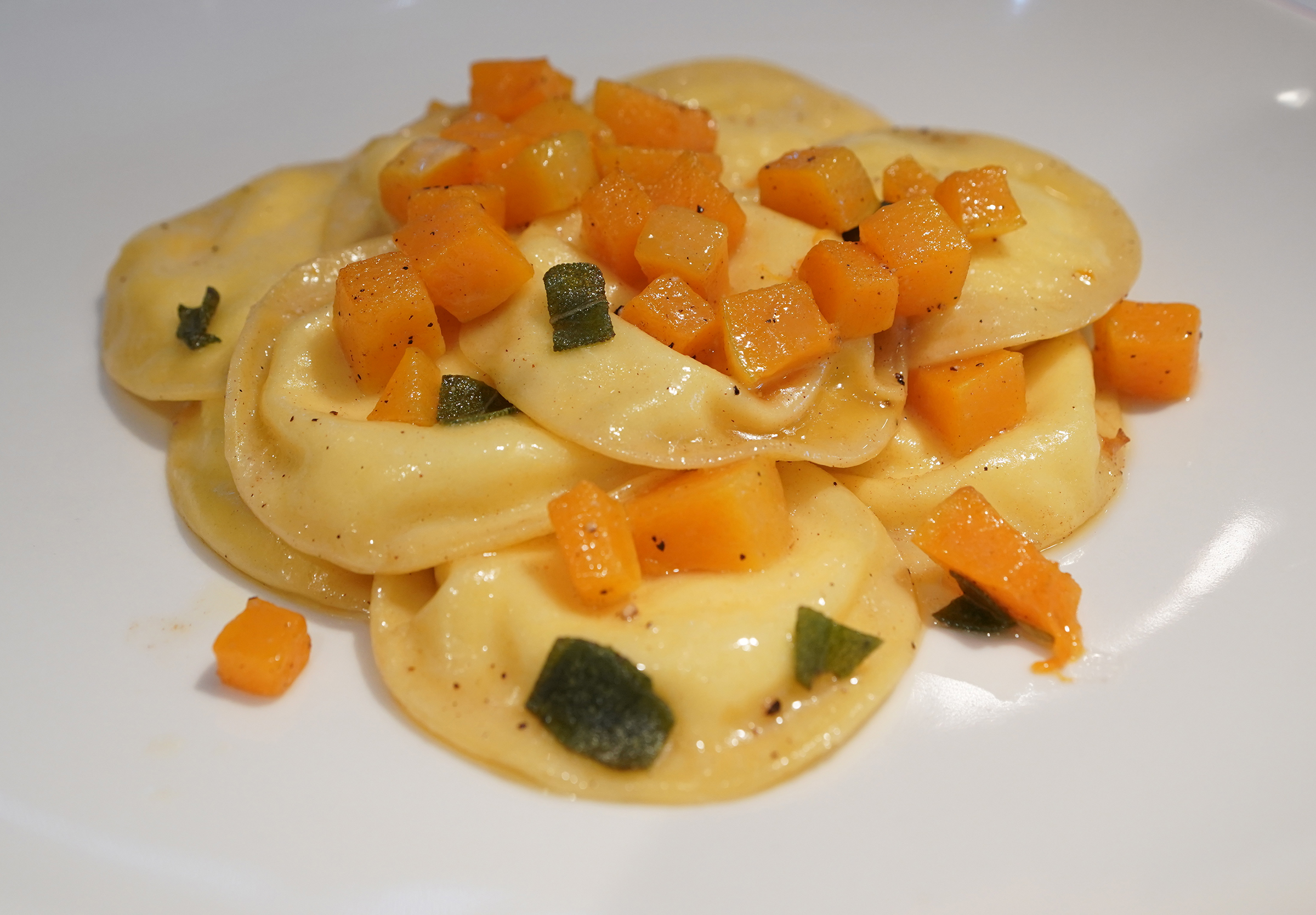
Senti
Senti in Lawrenceville is a celebration of Northern Italian cooking. Executive chef Antonio Garcia and his team are big on nuance, coaxing the best flavors out of ingredients without overcomplicating them.
Stuffed pasta on its elegant menu varies with the seasons, but you can expect whatever is offered to be beautifully prepared. In April, silken ravioli skins contained subtle spinach-ricotta filling. The dumplings were bathed in gorgeous butter sauce, with woody thyme adding enough herbal punch to uplift the dish and a hint of lemon to bring brightness.
Last year, agnolotti di vitello, wondrous dumplings stuffed with veal and herbs, swam in a bright veal and sage broth.
3473 Butler St., Lawrenceville; sentiresaurant.com
Piccolo Forno
Carla Branduzzi helms the pasta kitchen at the Lower Lawrenceville staple owned by her son, Domenic. Branduzzi typically offers two Tuscan-style stuffed pastas at the restaurant, though you might find an additional seasonal special if you're lucky.
Ravioli stuffed with spinach and cheese is a staple. It's drizzled with lemon-and-sage compound butter and shaved Grana Padano cheese, melding the pasta's chew and the spinach's bright grassiness. Branduzzi's tortelli, shaped like half-moons, comes with a meaty pork and beef filling and rich Bolognese sauce.
3801 Butler St., Lawrenceville; piccolo-forno.com
Cucina Vitale
Frank Vitale runs his small South Side restaurant with his heart, and it shows throughout his lovely, scratch-made menu. Vitale's dumplings, large portions and generously filled, are very in line with the hospitable spirit of the restaurant.
He offers two versions of ravioli — an “of the day” and a terrific herbed ricotta served with marinara or Bolognese. An April option of the daily special featured a pistachio pesto with tender shreds of braised veal. His classic square shaping is thinner in the orb of filling and delightfully chewy closer to the crimped edges.
2516 E. Carson St., South Side; cucinavitalepgh.com
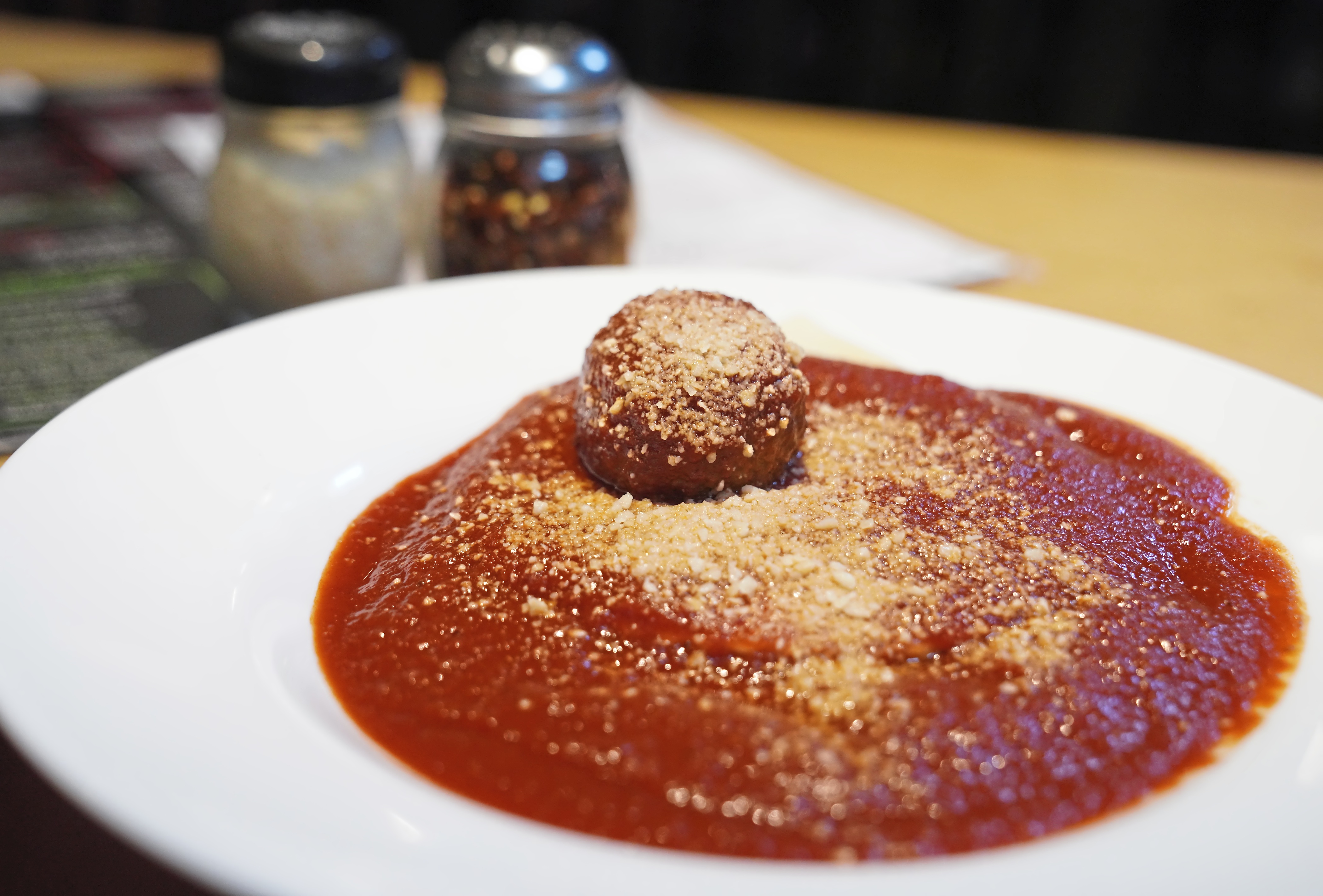
Tillie's
The McKeesport restaurant, established in 1962, is one of the region's last vestiges of excellent classic, old-school Italian-American dining restaurants. Dragicia “Carla” Calvitti, 85, makes the saucer-sized cheese ravioli for Tillie’s, just as she’s done for several decades. The pillowy skins ooze a delectable cheese filling that mingles magnificently with the establishment’s signature tomato sauce.
Get the parmioli, one of those gorgeous dumplings set atop a chicken Parmigiana, for a truly dreamy experience. Tillie’s also offers sausage ravioli, which tastes just like a stuffed banana pepper, and several house-made takes on seafood ravioli.
308 36th St., McKeesport; tillies.com
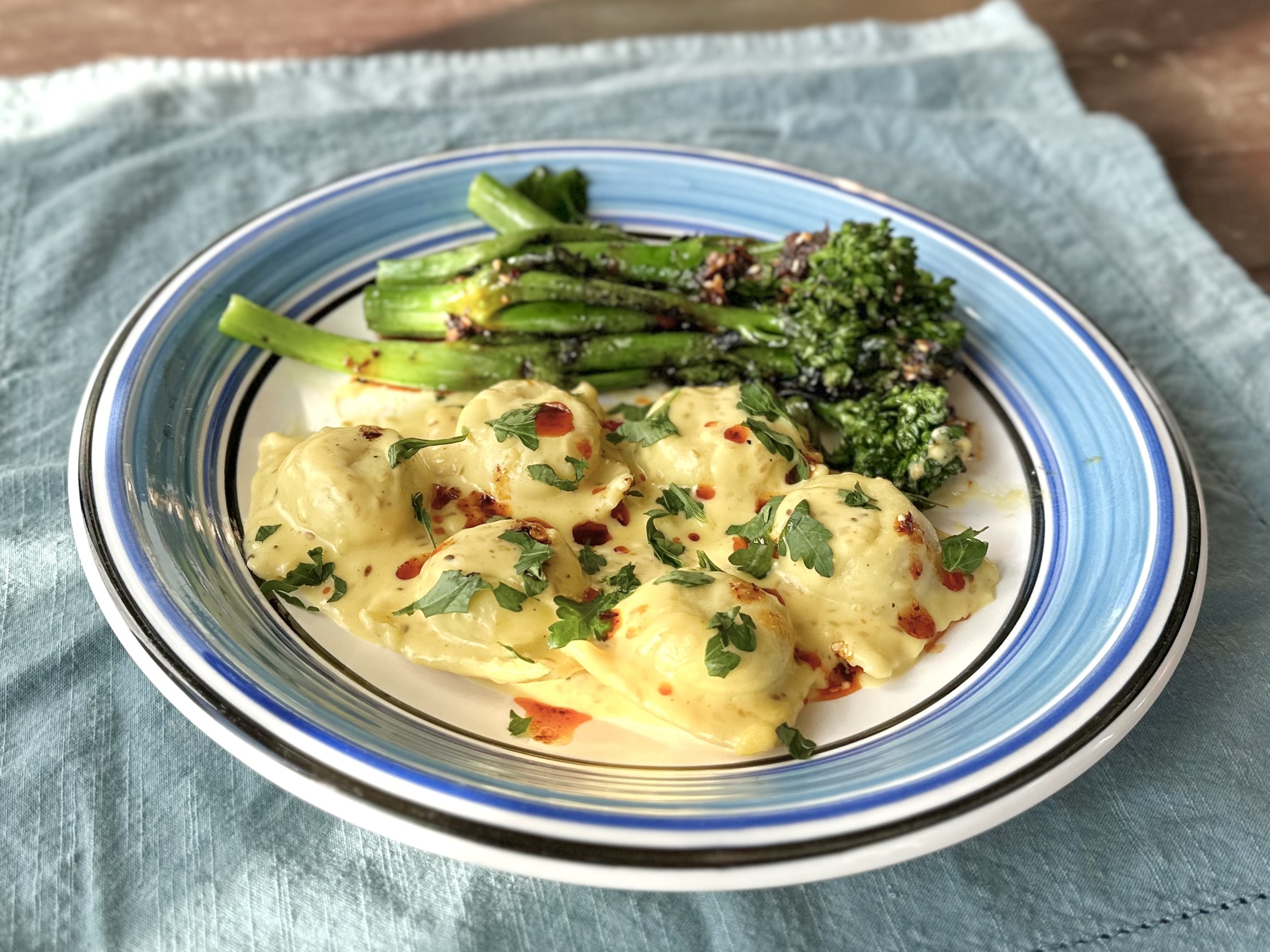
Saint Ravioli
Justin Avi brings a modern spin on Italian cuisine to the city's historic “Little Italy” with his hand-made stuffed pasta enterprise, Saint Ravioli.
He offers a rotating variety of dumplings at the Bloomfield takeaway, drawing influences from the classics (burrata alla vodka, quattro formaggi), sandwiches (porchetta, Philly cheesesteak), holidays (elotes for Cinco de Mayo) and bar food (Buffalo chicken). Avi also offers sauces designed to pair with specific flavors, though, of course, you can also dress them as you please.
The ravioli and sauces come frozen, along with instructions for cooking. Place orders in advance via Avi's website to schedule a pickup.
4615 Liberty Ave., Bloomfield; saintravioli.com
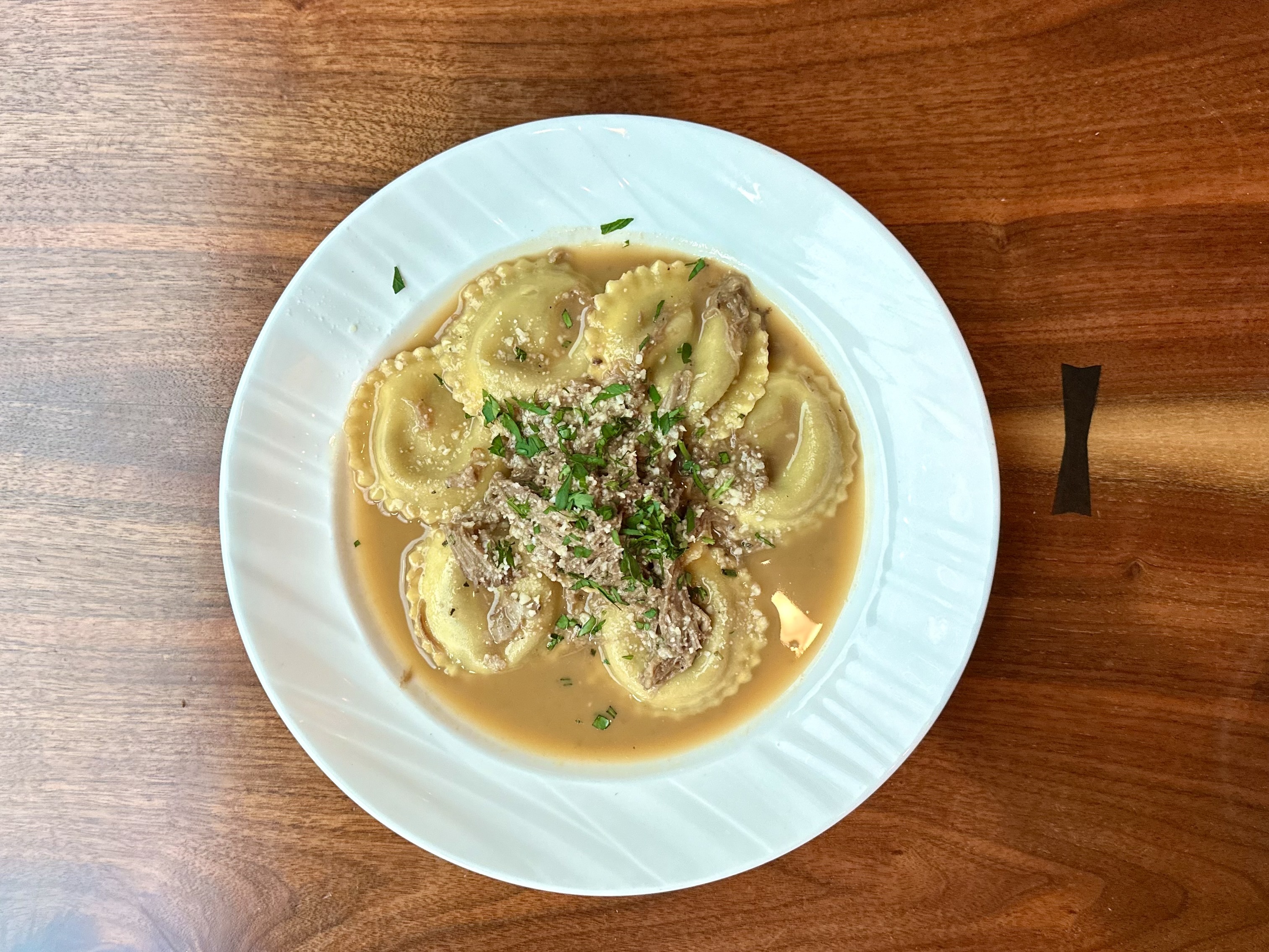
Vallozzi's
The Vallozzi family operates two restaurants in the region: Vallozzi's Greensburg, owned by second-generation restaurateur Ernie Vallozzi, and Vallozzi's Downtown, operated by his son, Julian. The Greensburg location, which opened in 1977, leans more toward the old school with its dishes prepared thoughtfully. Downtown, opened in 2012, is chic and contemporary.
Go for velvety porcini and truffle ravioli, which is served with a hefty portion of pork ragoût. Family matriarch Helen Vallozzi's classic cheese ravioli is also on the menu, prepared the way she made it for decades.
855 Georges Station Road, Greensburg; 220 5th Ave., Downtown; vallozzis.com
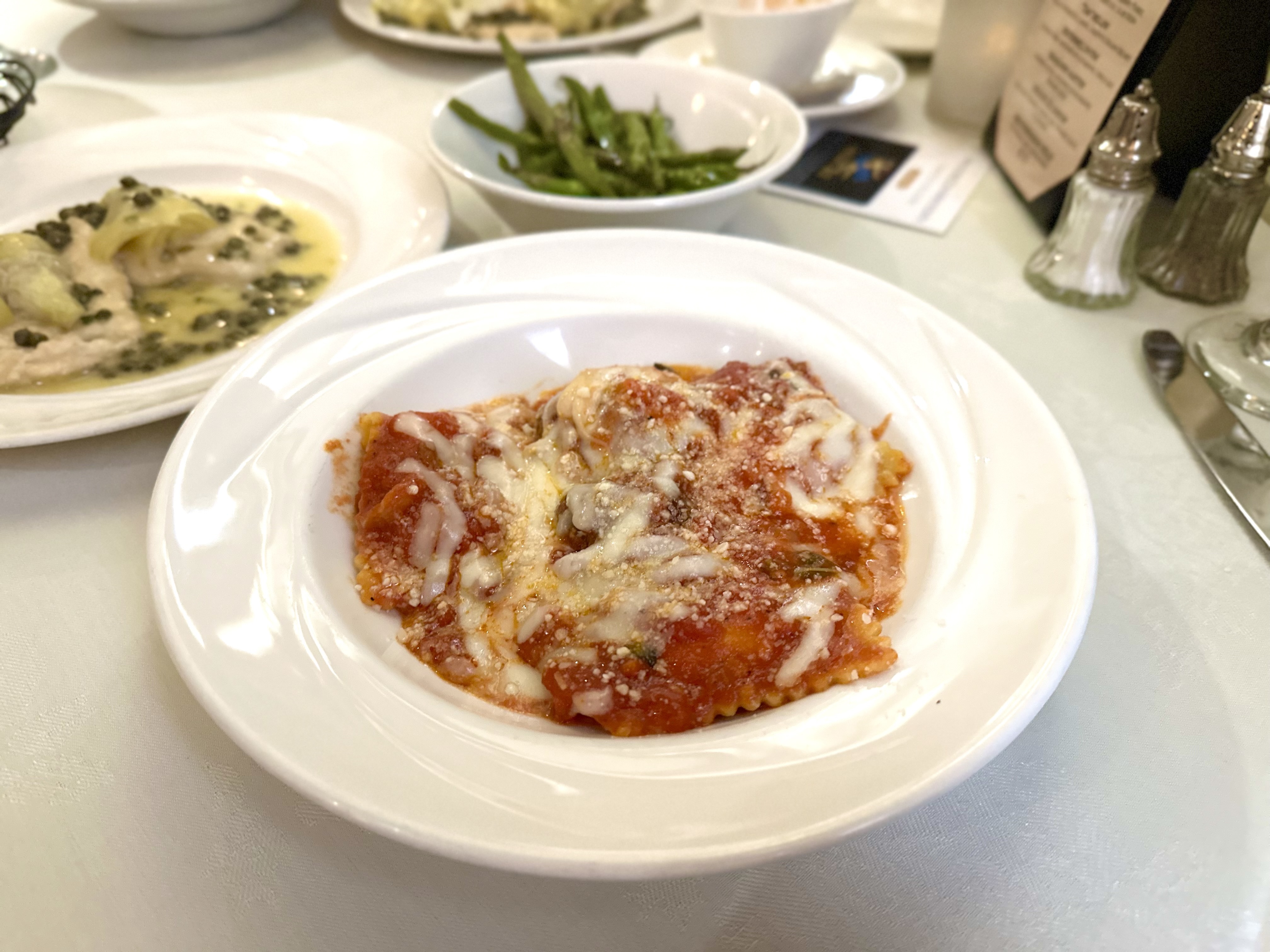
Joseph Tambellini Restaurant
Joseph Tambellini comes from the lineage of Pittsburgh restaurateurs who elevated Italian cuisine to a white tablecloth experience. He and his wife Melissa continue that tradition at their Highland Park restaurant.
Tambellini's scratch-made cheese ravioli, enhanced with tender meatballs, zippy sausage and bright tomato sauce, evokes nostalgia for a bygone era of dining. Melissa Tambellini's convivial front-of-house hospitality layers on the charm of a neighborhood trattoria.
5701 Bryant St., Highland Park; josephtambellini.com
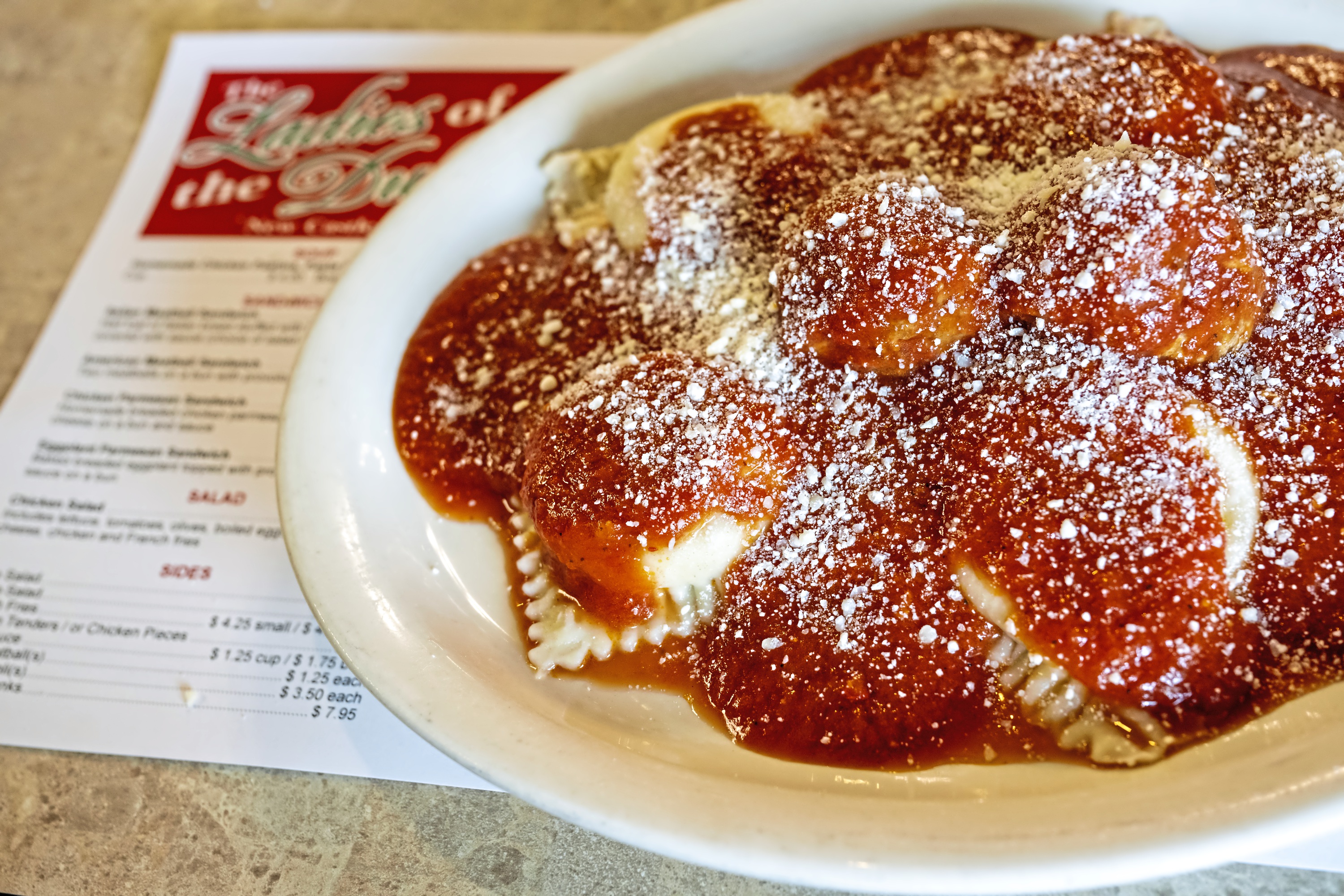
Ladies of the Dukes
It's a Sunday-only situation at Ladies of the Dukes, the weekly New Castle red-sauce gem where everything on the menu is scratch-made just like they've done it for more than 60 years. It's a good idea to make a reservation, because the craftwork of the kitchen of the women's auxiliary arm of the Italian social club Duca Degli Abruzzi is in high demand.
The cheese ravioli is a Sunday sauce classic, and it's worth making the 50-mile drive from Downtown Pittsburgh to enjoy them with a group of friends.
1114 N. Croton Ave., New Castle; 724-658-9258
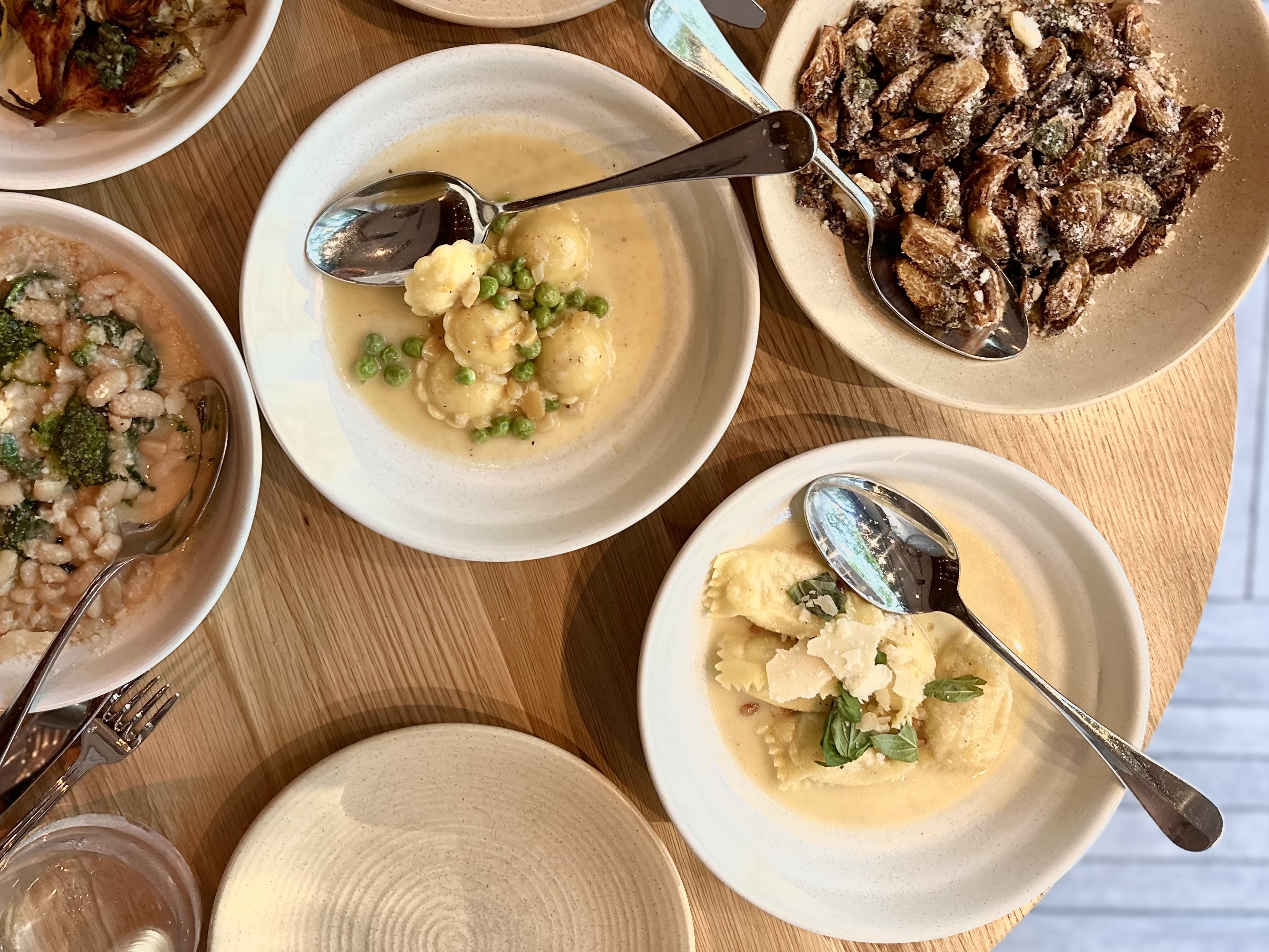
Alta Via
You'll always find a couple of stuffed pastas on the menu at the two locations of Alta Via. The modern Italian concept from Big Burrito Restaurant Group features a dedicated pasta-making area in the basement of its newer Downtown location, where executive chef Dustin Gardner and his team produce an armada of fresh pasta dishes.
In May, tender agnolotti shined with an airy ricotta filling, buttery basil sauce and woody pine nuts.
2 PPG Place, Market Square, Downtown; 46 Fox Chapel Road,; O'Hara; altaviapgh.com
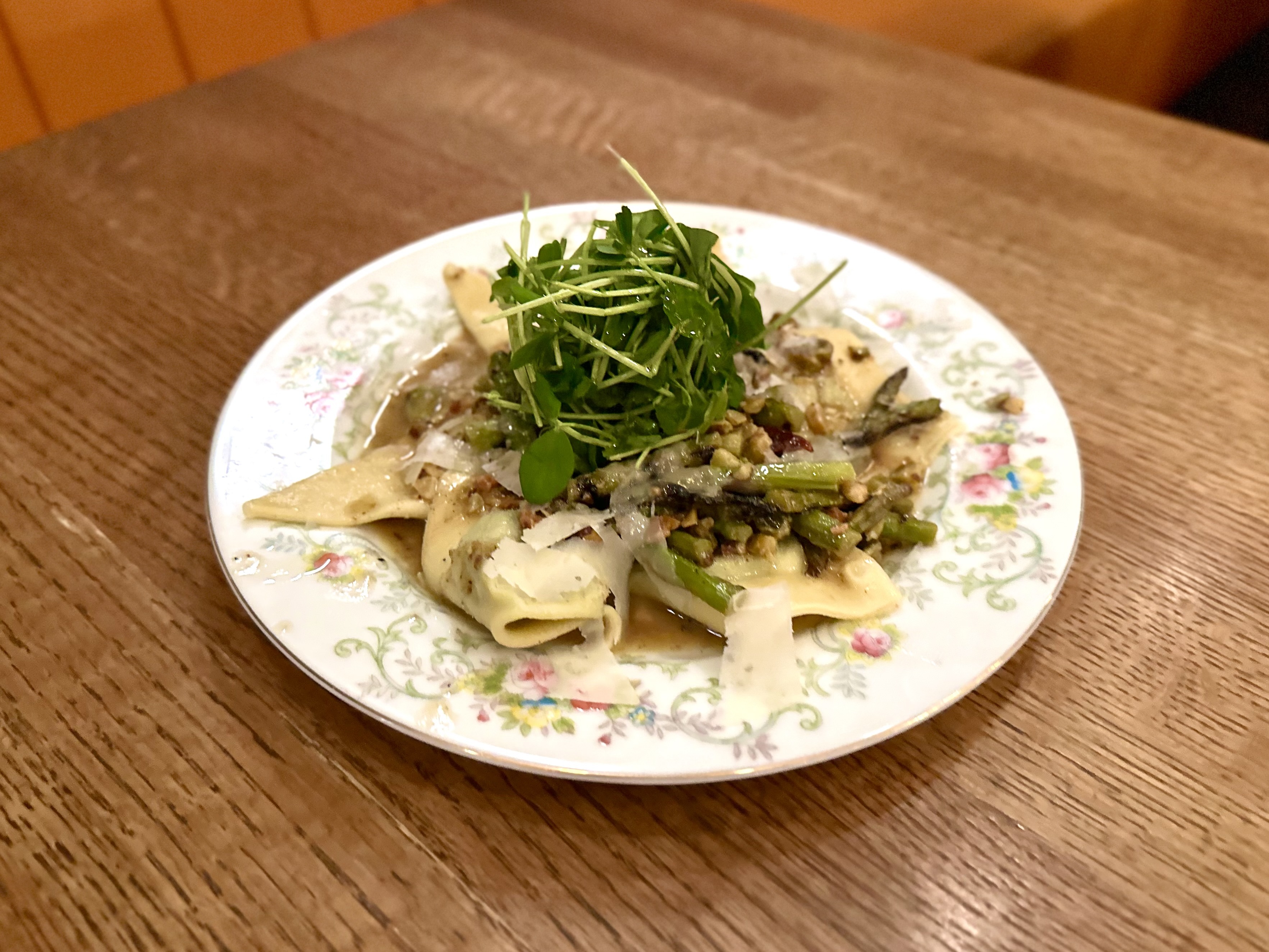
Della Terra
If you're looking for contemporary-classic Italian cuisine north of the city, head to Della Terra in Zelienople. Just like other seasonally influenced menus on the list, the particular dumpling offered shifts from time to time (and that's something that keeps us coming back).
Pansotti, a triangular shape from the Liguria region of Italy that roughly translates to “pot bellied,” came stuffed with peppy arugula and ricotta filling in early May. The dumplings swam in a toasted pistachio butter subtly punched up with whole Calabrian chilis and Parmesan.
100 N. Main St., Zelienople; dellaterrapgh.com
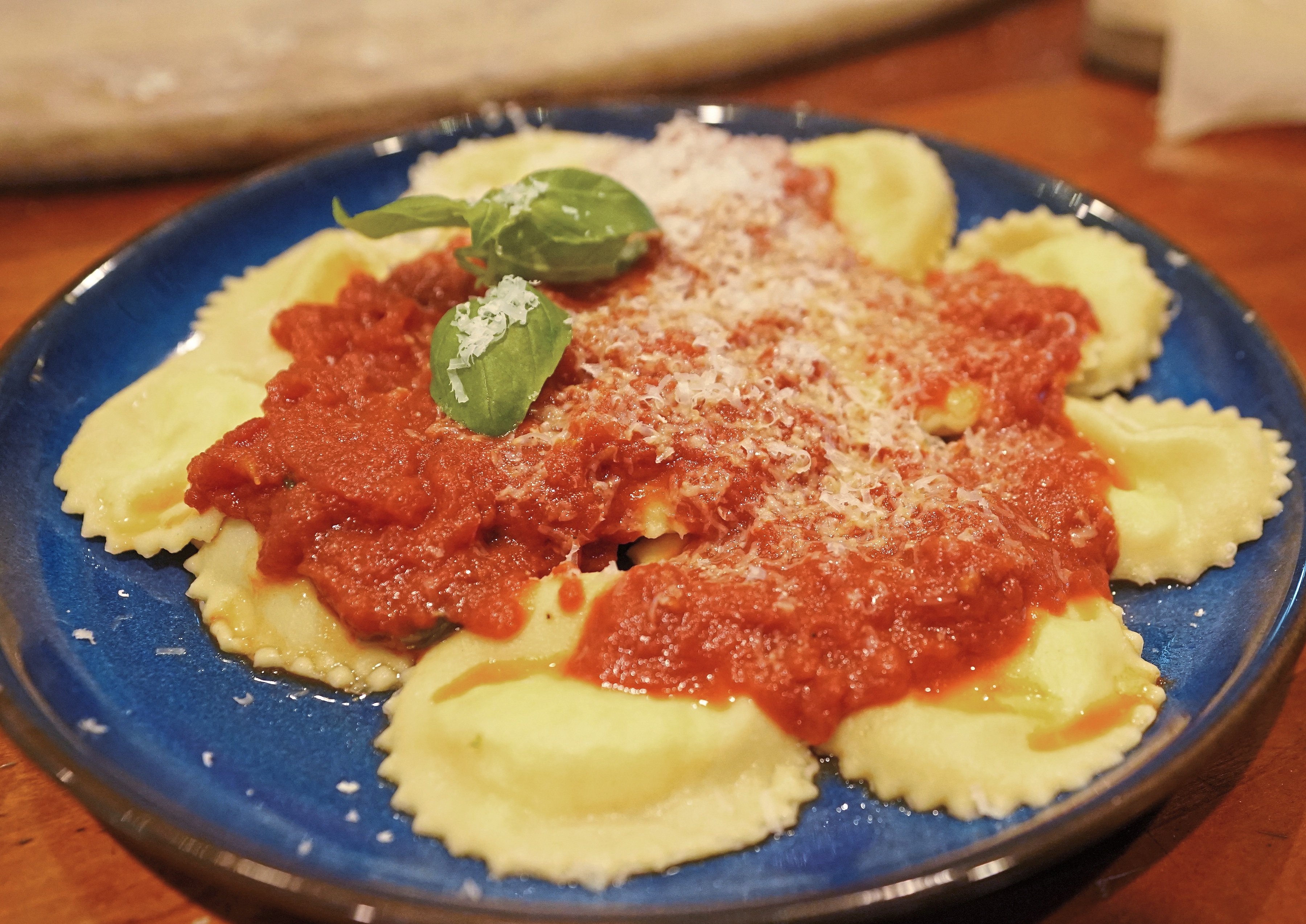
Making Italy's favorite dumpling from scratch can give even practiced home cooks reason to pause.
Homemade ravioli requires mixing and rolling a mixture of egg and flour into delicate, almost translucent dough sheets, which can prove an exercise in frustration if you don't have a nonna lending an experienced hand.
But as TikTok phenom and pasta chef Ryan Peters sees it, the key to nailing the process usually boils down to two things: using quality ingredients and being willing to practice — sometimes again and again — until you get good at it.
“At its core, it's two simple ingredients,” he says. “If my 3-year-old can do it, so can you! And if you mess it up, I'm sure it will still be an edible mistake.”
He's got evidence of both in the hundreds of photos and how-to videos he started posting on social media a couple of years after graduating from Indiana University of Pennsylvania's Academy of Culinary Arts in 2012, and in the years since has racked up millions (and millions) of views. In his words, “mind blowing!”
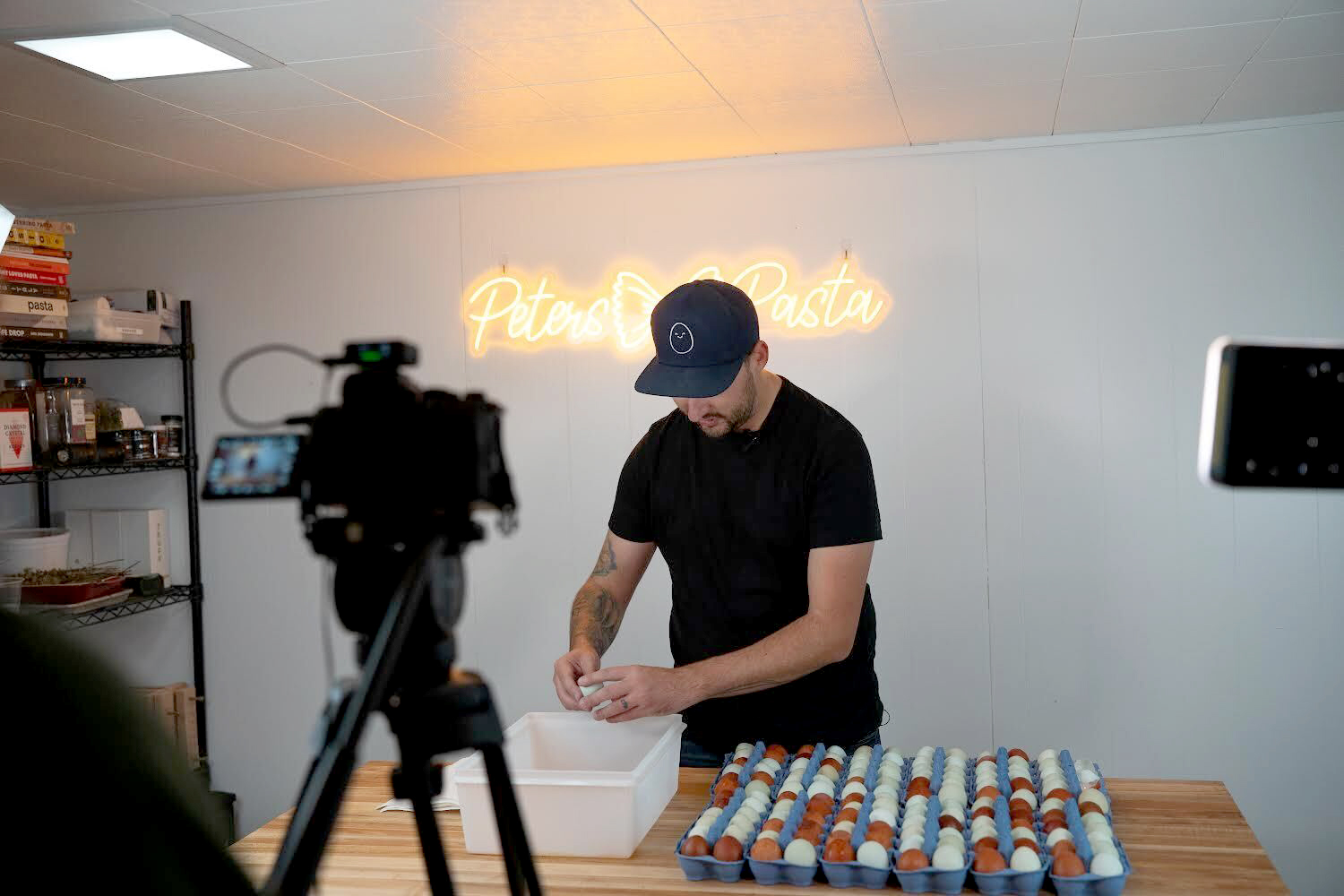
From the start of his career, which has included stints at now-closed Salt of the Earth in Garfield and Brunoise in Smallman Galley, along with club jobs in Florida, the Reading native has always been good about documenting his journey as a chef through journals and iPhone photos. But his occasional posts to Instagram and Facebook never got much traction, he recalls.
It wasn't until he finally created a TikTok account in July 2019, when he was helping to build out the pasta program at Iron Born Pizza in the Strip District, that his career as a pasta chef really took off.
He'd started honing his pasta game in earnest the year before, after making it one night after work for his wife, Caroline. Though he'd made the dish a million times before as a chef, fresh pasta was never his thing. But that night, it wasn't just great — it was so fantastic that he made another pound of pasta the next day, and then again for the next 63 days in a row.
“I'd come home, make dough, roll it out and make different shapes to understand it,” he says. “And that's when I decided to become a pasta chef.”
Part of the appeal was the simplicity of the dish — how just a handful of everyday ingredients can turn into something very delicious. “And I just love that everyone in the world relates to pasta,” Peters says. “Everyone eats noodles at some point in their life. It's a very universal thing.”
As far as his TikTok launch: “I was hearing about it from everybody and especially my younger brother, Matthew,” he recalls with a chuckle. “And I was like, ‘What is this? It's ridiculous. I'm not getting it.'”
@peterspasta Ricotta Ravioli, Brown Butter & Lemon #pastatiktok ♬ Epic Music(863502) - Draganov89
Matthew, though, was persistent and soon after Peters joined the platform, he posted a five-second video of him rolling cavatelli to the Trey Songz tune “Slow Motion.” To everyone's surprise, it went viral, chalking up a half-million viewers in just 24 hours. “And I thought, ‘This is insane!'”
Before too long, the chef was posting several times a day and had earned 300,000 followers on the platform. “I got to the point where I was almost juggling two full-time jobs,” he says. “I'd do my thing at Iron Born then be up to 2 or 3 a.m. creating content,” in his home studio in West Mifflin.
Still, it wasn't until he took a month off from his restaurant job in November 2020 after the birth of his son, Gavin, that he realized his TikTok work wasn't just a hobby — it was a business with potential to make money and be sustainable if he put work into it.
Five months later, he left Iron Born to become a full-time TikTok creator under the handle @peterspasta. Today, the 30-year-old counts more than 5 million followers and more than 1 billion views on the platform, with 8½ million followers across all of his social platforms. On YouTube alone, he has more than 1.4 billion views.
Peters credits his success to the fact he got “lucky.” He hit his stride in 2021 right as the COVID-19 pandemic was ending and things were opening up again. Or as he puts it, “I had a pretty decent following when the nworld shut down and I thought, ‘What can I do to take advantage of this?'”
He started by reaching out to the Steelers to see if he could make pasta at Heinz Field, and from there, “it just snowballed,” he says.
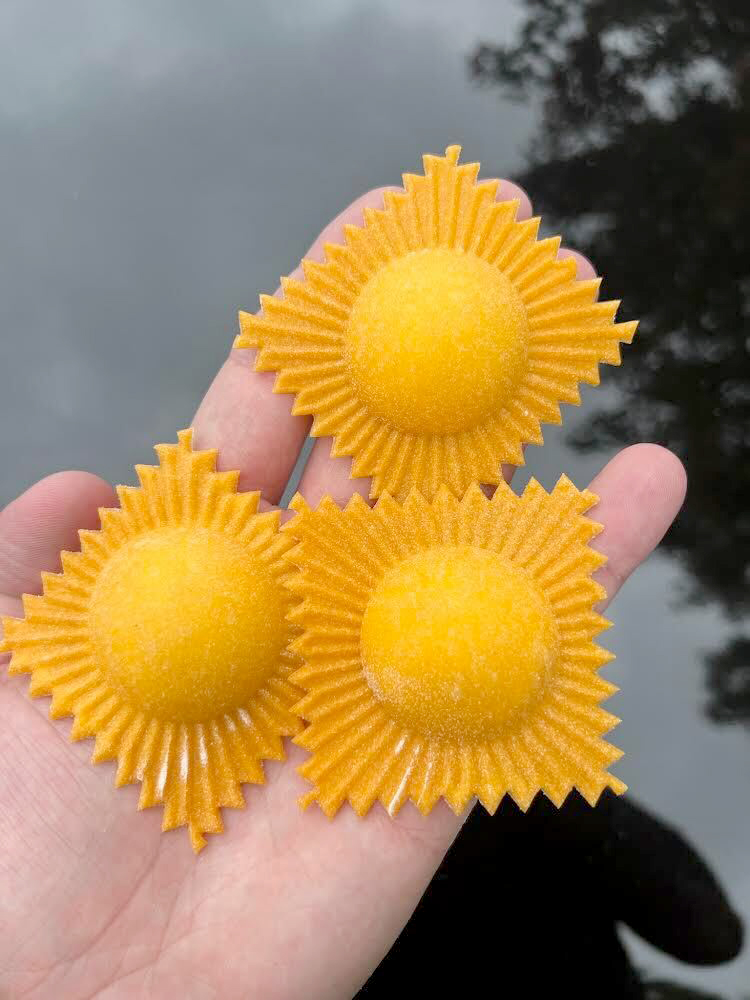
In the years since, Peters has traveled across the U.S. to make thousands of pounds of fresh pasta using thousands of eggs in a multitude of locations with sponsorships from various brands — at other major sports stadiums, aboard cruise ships, on the top of the Empire State Building in New York City and even in the middle of an aisle at Walmart. Celebrity helpers include everyone from the Pirate Parrot to Mr. Peanut.
Last year's “Double Batch” series, in which he doubled the number of eggs in a batch each day for two weeks, was his largest pasta project to date. It ended on Day 14 with Peters and YouTuber MrBeast (and a crew of other helpers) cracking 10,000 eggs into 600 pounds of flour in a warehouse in North Carolina to make “a lot of pasta dough.” Some of it was handed out for free afterward by a food truck to local residents, and the rest went to a neighborhood food bank.
Most of Peters' big batches, in fact, are donated. One favorite charity is Outreached Arms, which works to get food to the homeless community. Bread of Life and the Community Free Fridge in Etna have also been beneficiaries.
While he started just wanting to entertain his online audience, Peters says one of main goals today is to try to get more people in the kitchen making homemade pasta. To that end, he's getting ready to launch a summer cooking podcast wherein he'll cook a dish or meal for a celebrity guest as they sit at a kitchen counter. “And we'll have a conversation that will show them in a different light,” he says.
He also hopes to start dried pasta and pasta sauce lines, though both projects are on the back burner for the moment because he's so busy.
In the meantime, Peters — who has never wanted to do anything but cook since he was in the second grade — will keep creating content for his food-obsessed audience.
For those who want to try to make homemade pasta themselves, and turn it into ravioli, he offers these tips:
• Because pasta is so simple — ingredients include just eggs and flour and maybe water — use the best you can because “there's nothing to hide behind.” In his opinion, that includes super-fine white “00” flour (available at Italian markets such as Pennsylvania Macaroni Co.). He also recommends free-range eggs, which tend to have a deep yellow-orange yolk.
• He only uses egg yolks for a richer dough, but it's perfectly fine to use the entire egg if you don't have a use for the whites.
• Making pasta the old-fashioned way like he does on camera — adding yolks to a well of flour and mixing it together with a fork and bench scraper — is fun, but it's also challenging. There's no shame in using a food processor to mix and knead the dough. “Whether you're forming it by hand or in a mixer, you're doing the same thing — incorporating air into the dough to create texture.”
• To recreate his recipe, mix 100 grams (a little more than ¾ cup) of flour for every 1 egg yolk and plan on 1 egg per person.
• Let the dough rest for 35-45 minutes before rolling. You'll know it's ready to go when it's smooth, and the dough bounces back when you press it with a finger or thumb.
• In a rush? If you place the dough in a vacuum sealer, Peters says, you can roll it out right away because it will immediately hydrate the dough.
• If you pre-roll or stretch a piece of dough into a perfect rectangle before running it through the pasta machine, you usually will get a perfectly straight sheet.
• When rolling, don't be afraid to go pretty thin; you should almost be able to see through it on a wooden board. Because the filling will be sandwiched between two pieces, “You want nice and delicate,” says Peters.
• Experiment with different fillings and seasonings. Peters loves to add a little lemon zest along with herbs to his ricotta cheese filling for a bright, citrusy touch.
Recipe: Three-Cheese Ravioli
PG tested
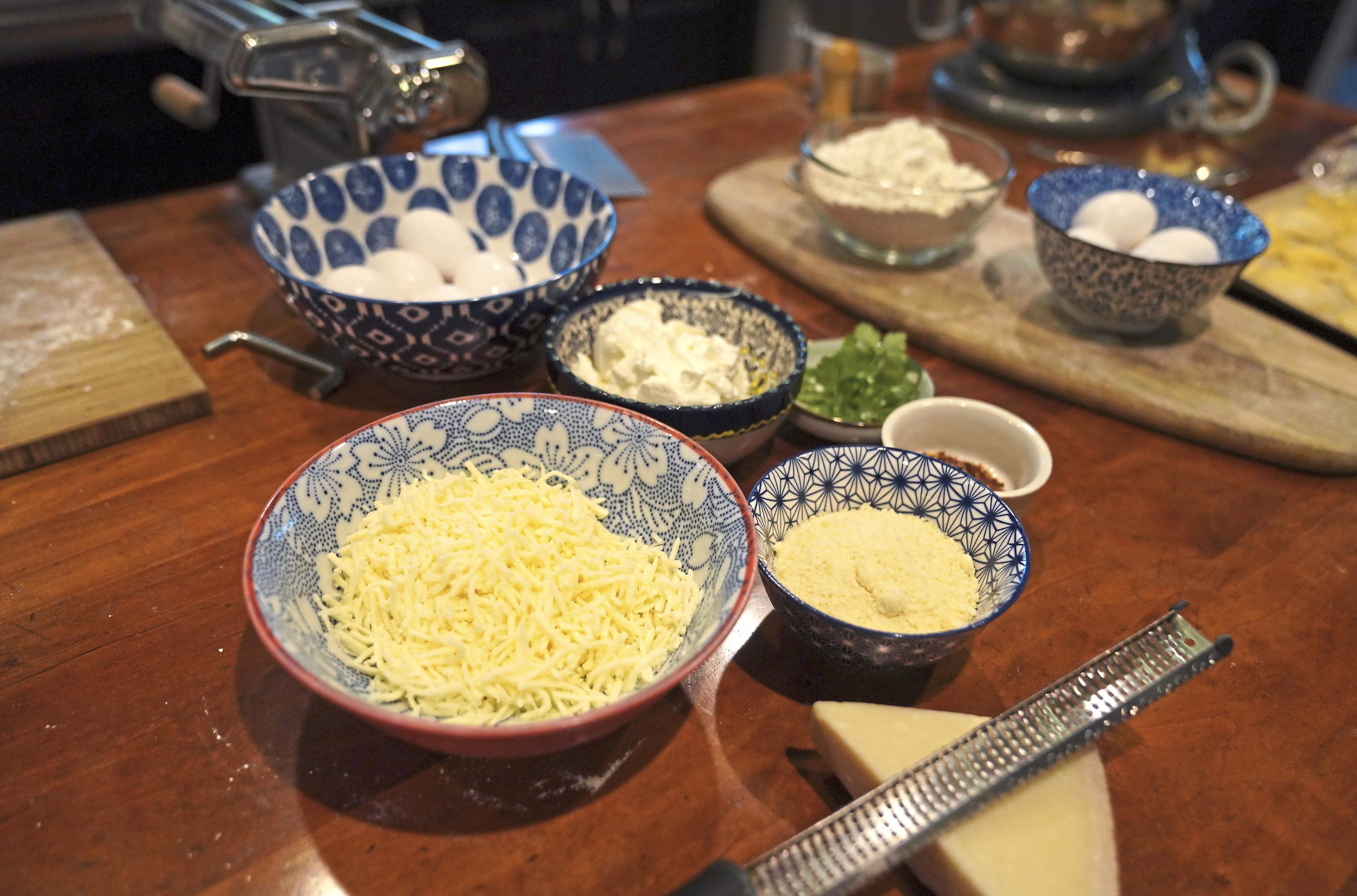
For dough
Pasta recipes vary depending on the cookbook. Some include only egg yolks, others use whole eggs and still others add water or olive oil. After trying many, my go-to recipe comes from Linda Miller Nicholson’s “Pasta, Pretty Please: A Vibrant Approach to Handmade Noodles” cookbook. It works every time!
I used a hand-cranked pasta rolling machine to roll out the dough, but in a pinch you could also use a rolling pin. Kneading the dough before it rests is essential to create pasta dough that is smooth and elastic, so put some muscle into it. Always let the dough rest for at least 30 minutes after you make it to allow the gluten strands to relax.
Fresh pasta will keep up to three days in the refrigerator wrapped in plastic. Oxidation may cause it to turn gray, but the taste won’t be affected. It also freezes beautifully and will last up to a month in the freezer.
2¼ cups all-purpose flour
4 large eggs
For filling
8 ounces fresh ricotta cheese, drained
8 ounces shredded mozzarella
½ cup grated Parmesan cheese
1 egg, beaten
Pinch red pepper flakes
Pinch grated nutmeg
Chopped parsley, to taste
Salt and pepper, to taste
To serve
Marcella Hazan’s tomato sauce (recipe follows)
Grated Parmesan cheese
Prepare pasta dough: Combine flour and eggs in bowl of a standing mixer fitted with a paddle attachment, and mix on low speed until a ball of dough forms. Continue to knead for 3 minutes, either by hand or in the mixer, so that the dough develops elasticity and silkiness.
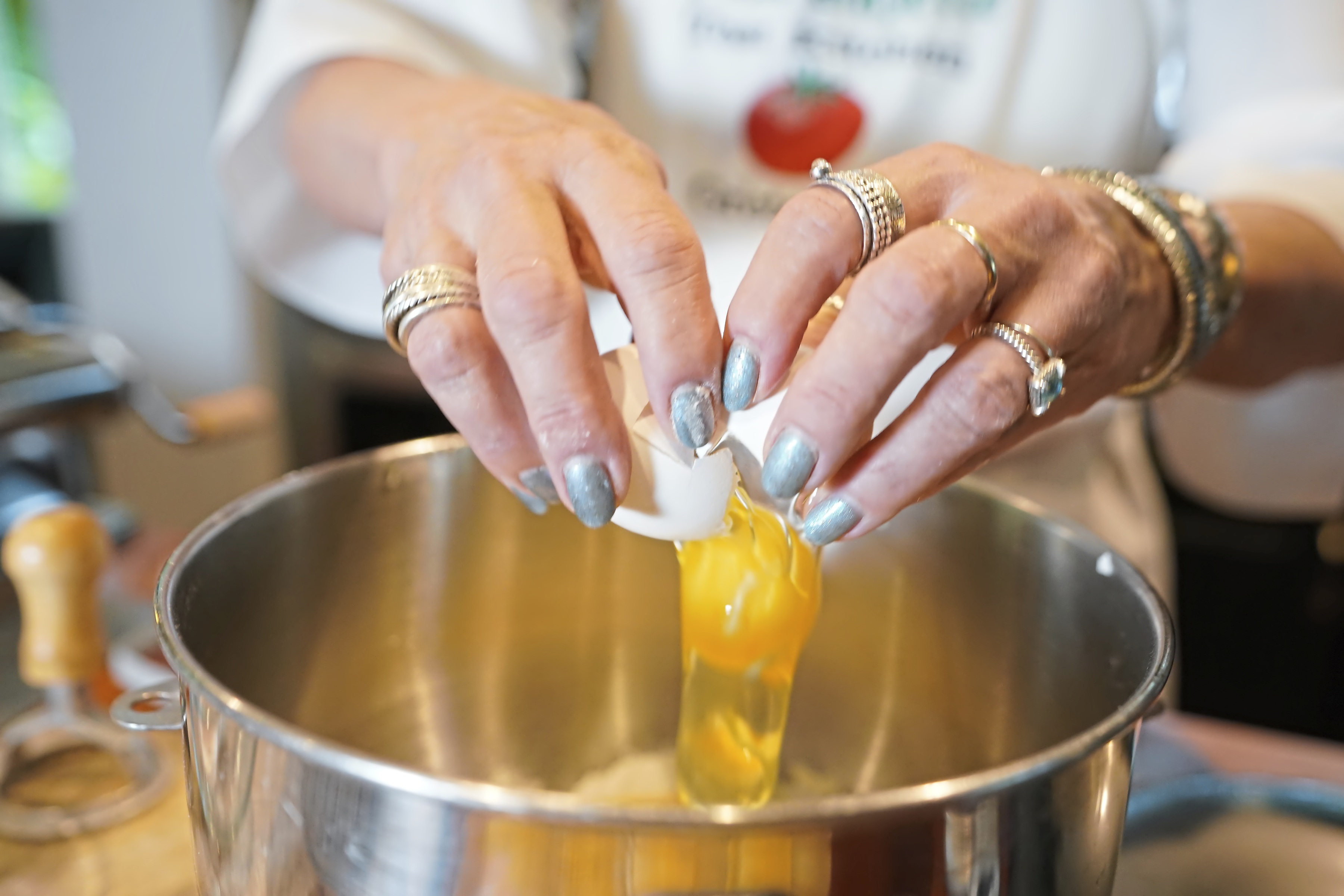
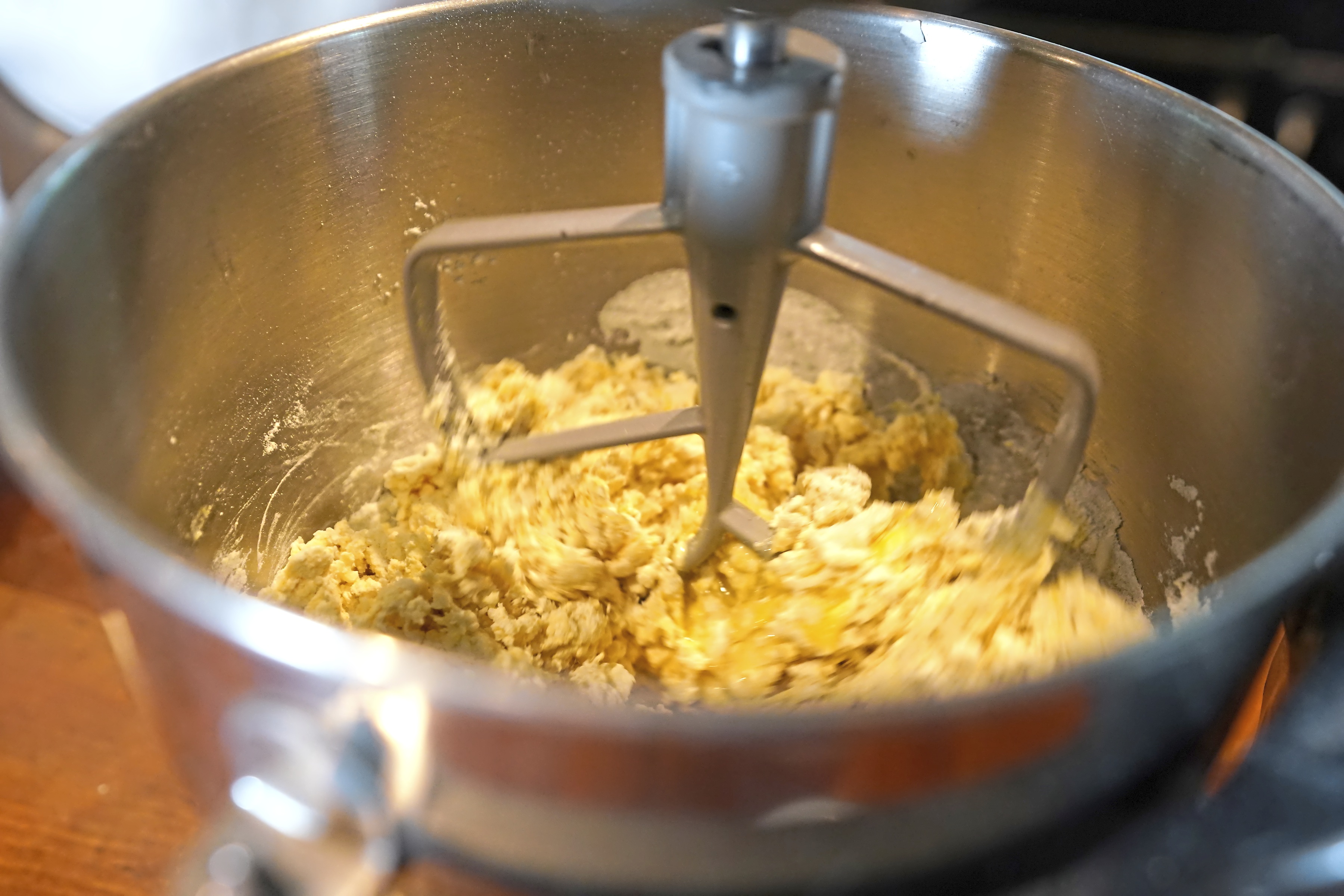
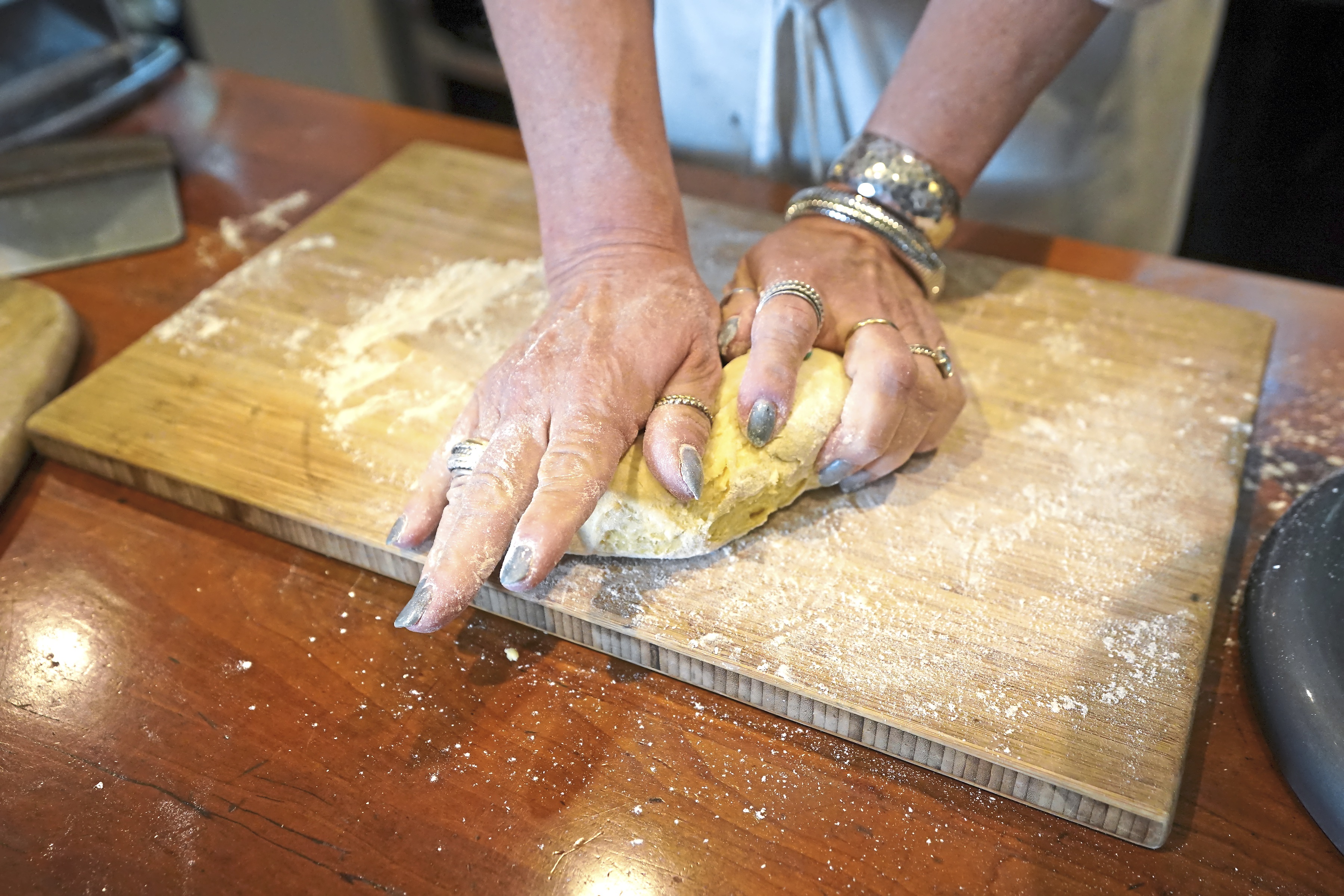
Cover the ball of dough in plastic wrap and let it rest at room temperature for 30 minutes before using. Alternatively, you can let the dough rest for up to 24 hours in the refrigerator.
While dough is resting, make filling: In large bowl, stir together ricotta, mozzarella, Parmesan, beaten egg, red pepper flakes, grated nutmeg and chopped parsley until well combined. Season to taste with salt and pepper.
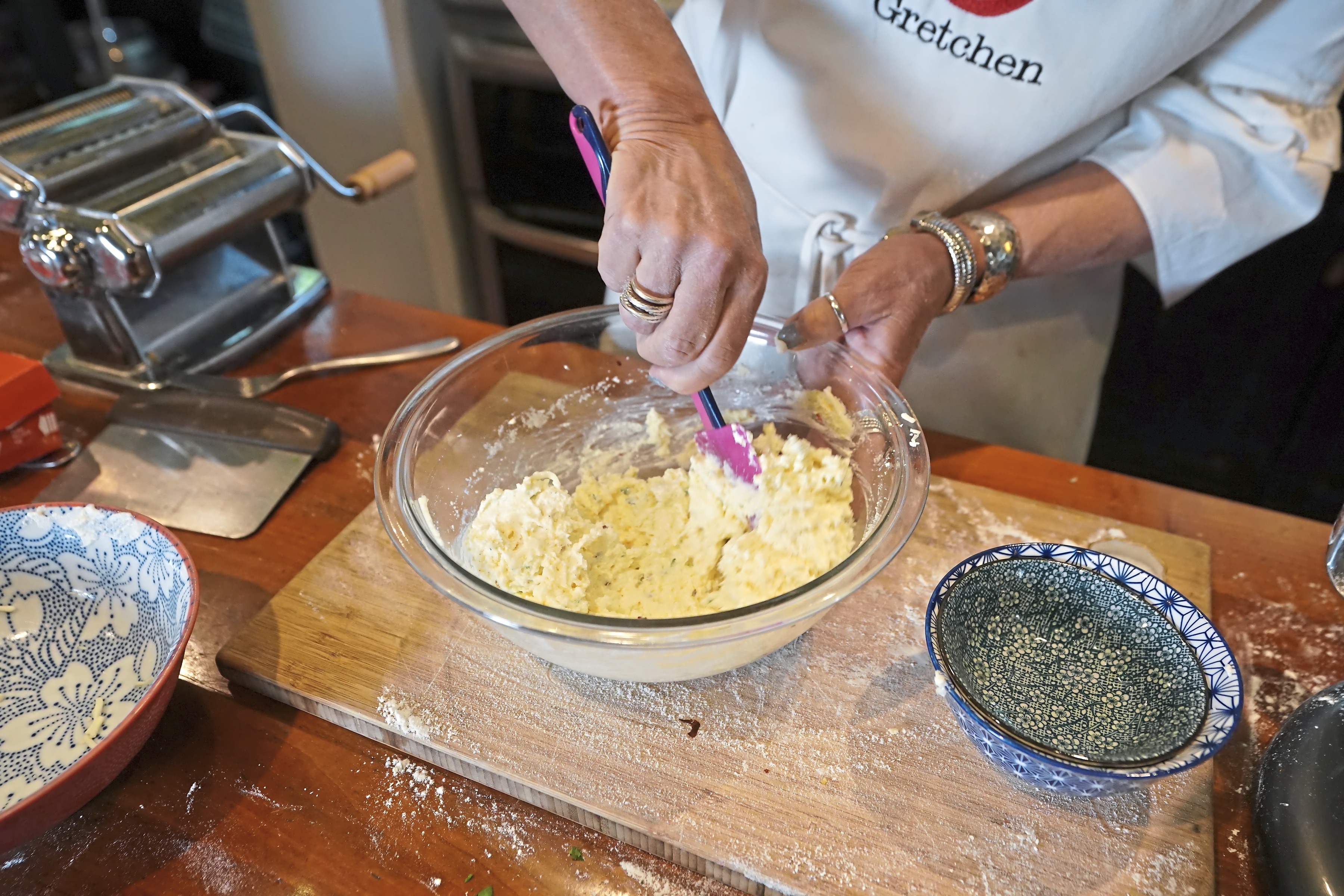
Roll pasta dough: Using a bench scraper, divide the dough into six equal portions. Lightly dust a parchment-covered baking sheet with cornmeal or flour and set it aside. (This is where you will place pasta after it’s rolled.) Lightly dust your work area with flour.
Pat dough into a small rectangle and dust with flour. Set pasta maker to widest setting and pass dough through the machine.
Place dough on a lightly floured work surface. Fold both ends in so that they meet at the center of the dough, and then fold the dough in half where the end points meet, trying not to incorporate too much air into the folds. Pass through the rollers 3 additional times.
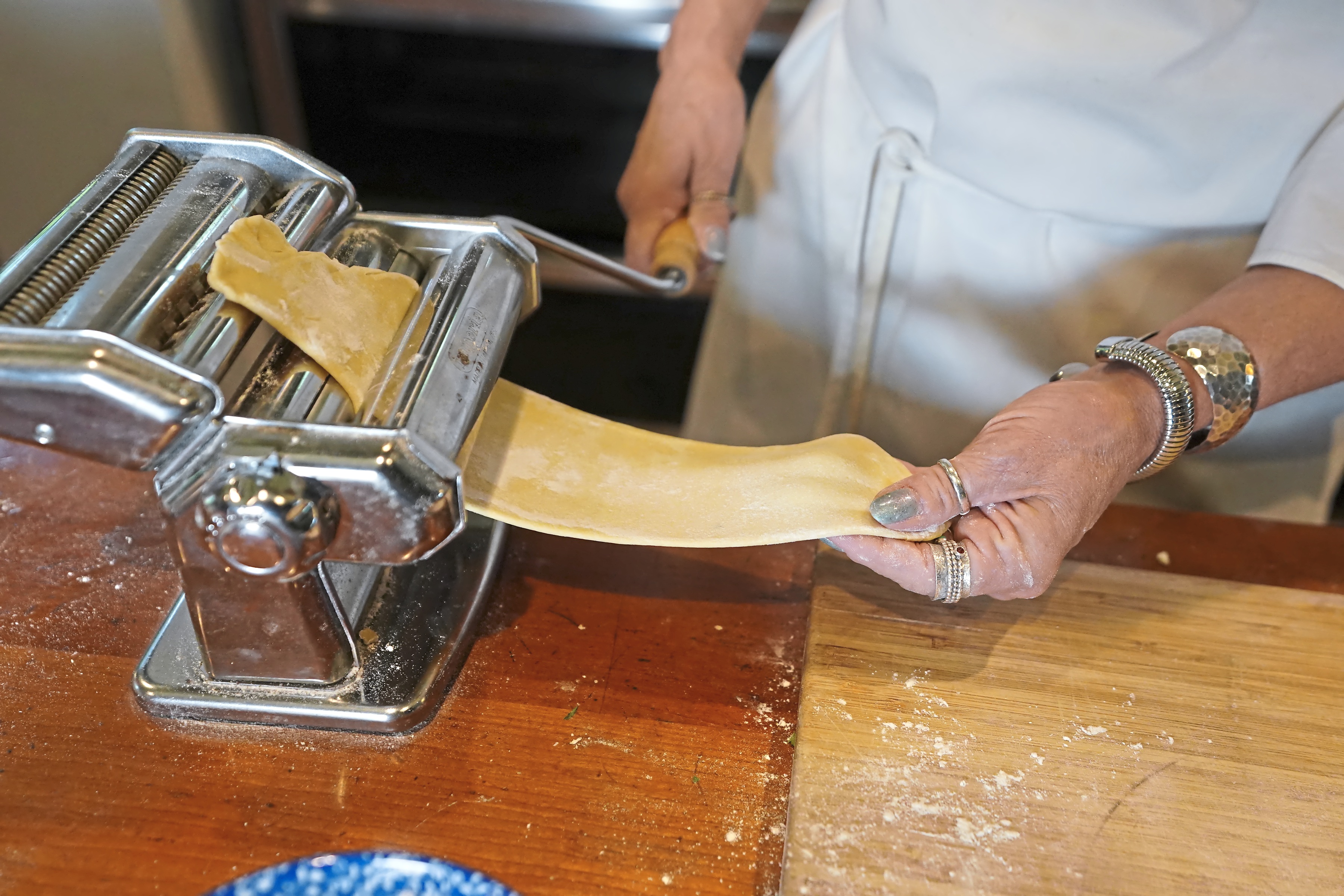
Narrow the setting by 1 notch and repeat putting pasta through the rollers 2 or 3 more times. Continue working your way down the settings until pasta reaches the desired thickness. It should now be very delicate, elastic to the touch and slightly translucent. (Trimming the ends into a straight line will make it easier to feed through the roller.)
Place rolled pasta sheet on floured work area. Dollop the cheese filling (in rounded teaspoons) down the center of half the sheet, spaced 2 inches or so apart. Fold the empty half over the top of cheese dollops and, with your fingers, smooth gently around the filing to get the air bubbles out. Press to seal the edges then, using a 2½-inch ravioli stamp cutter, cut out ravioli. (It will automatically seal at the same time.)
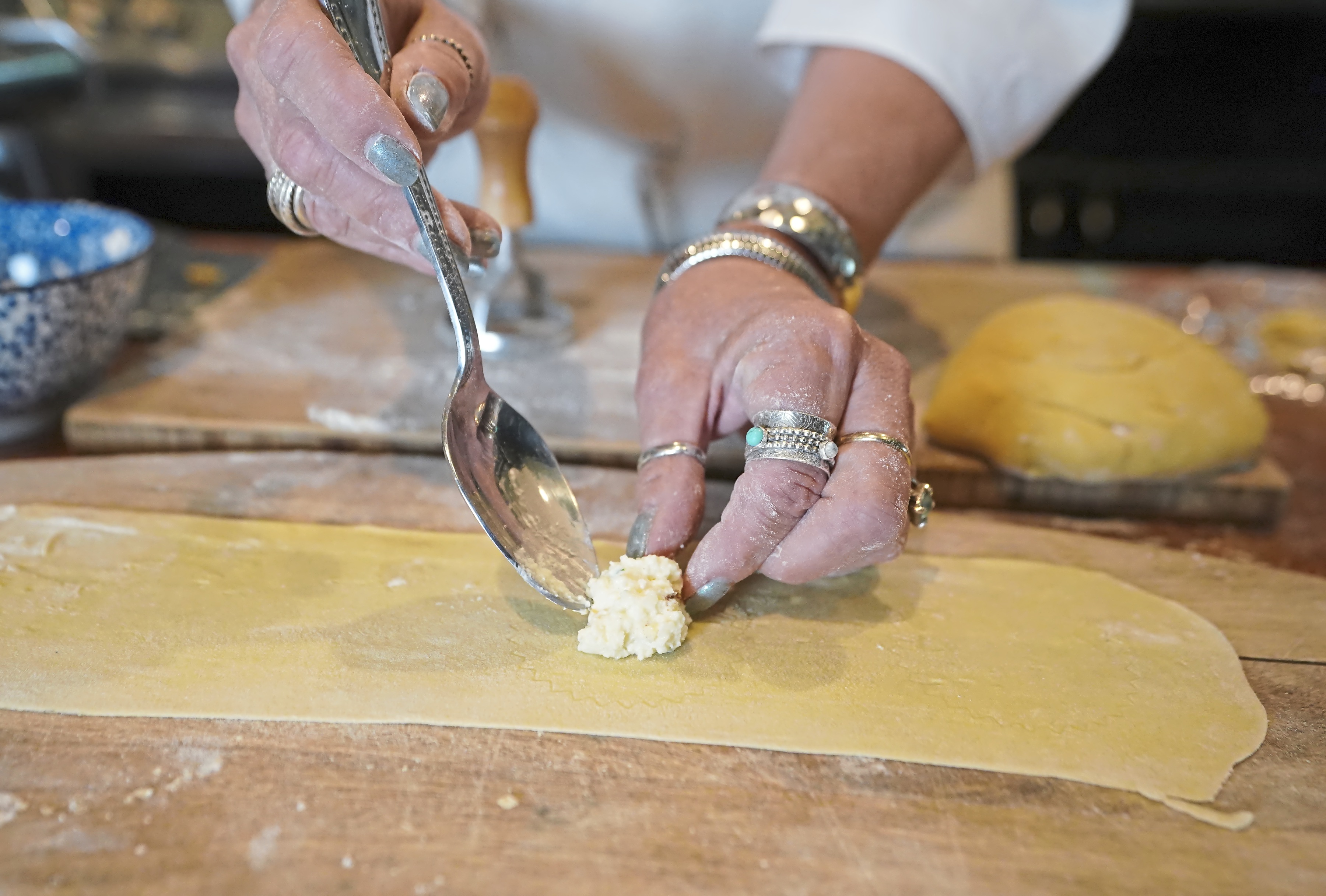
Alternatively, lay a matching piece of dough on top of the sheet with ricotta, then press down all around the edges to seal the shape and cut out ravioli with stamp cutter. Or, cut into small squares with a knife and press down around the edges again with your fingertips to seal.
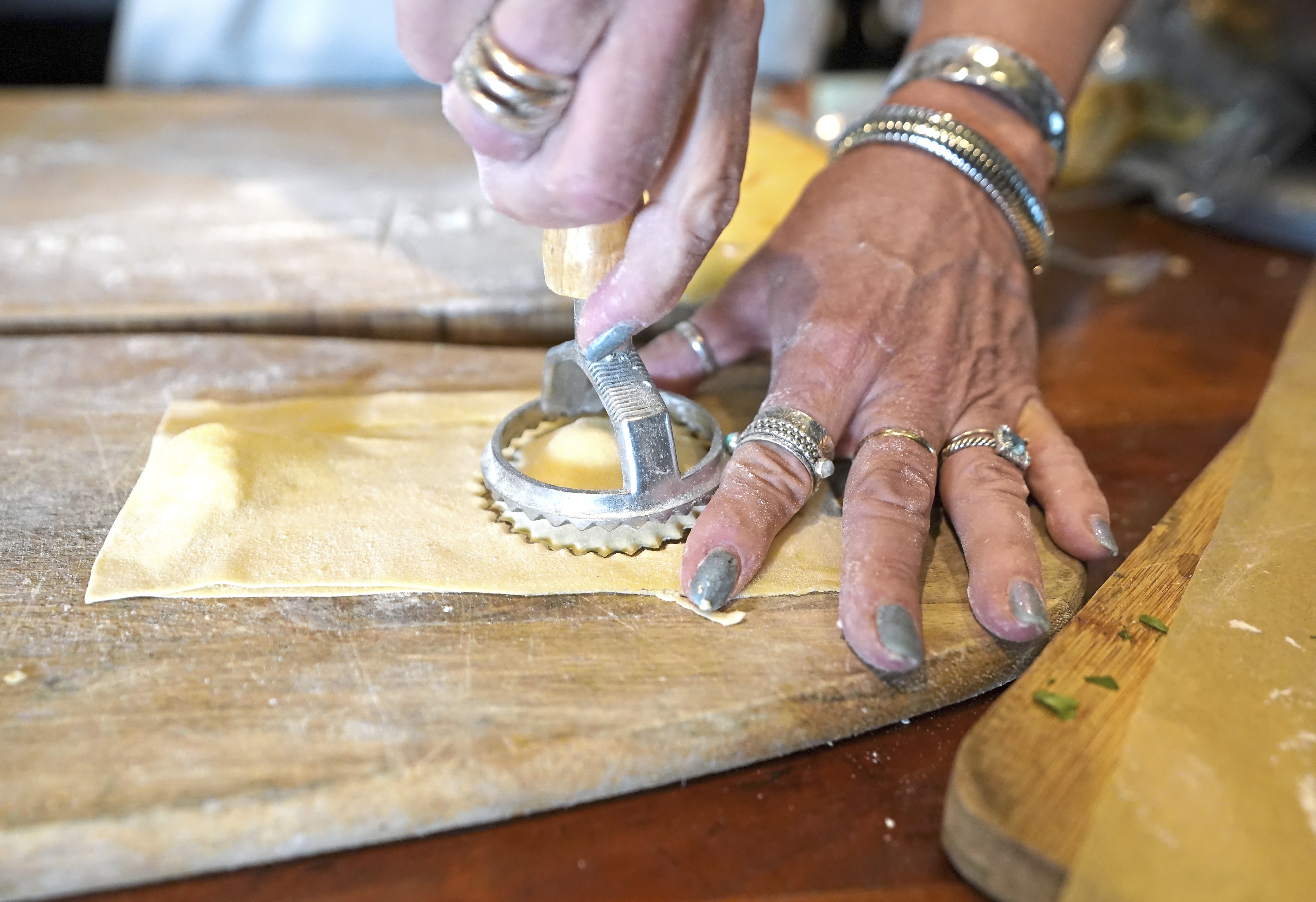
Place finished ravioli on a baking tray and continue forming remaining ravioli.
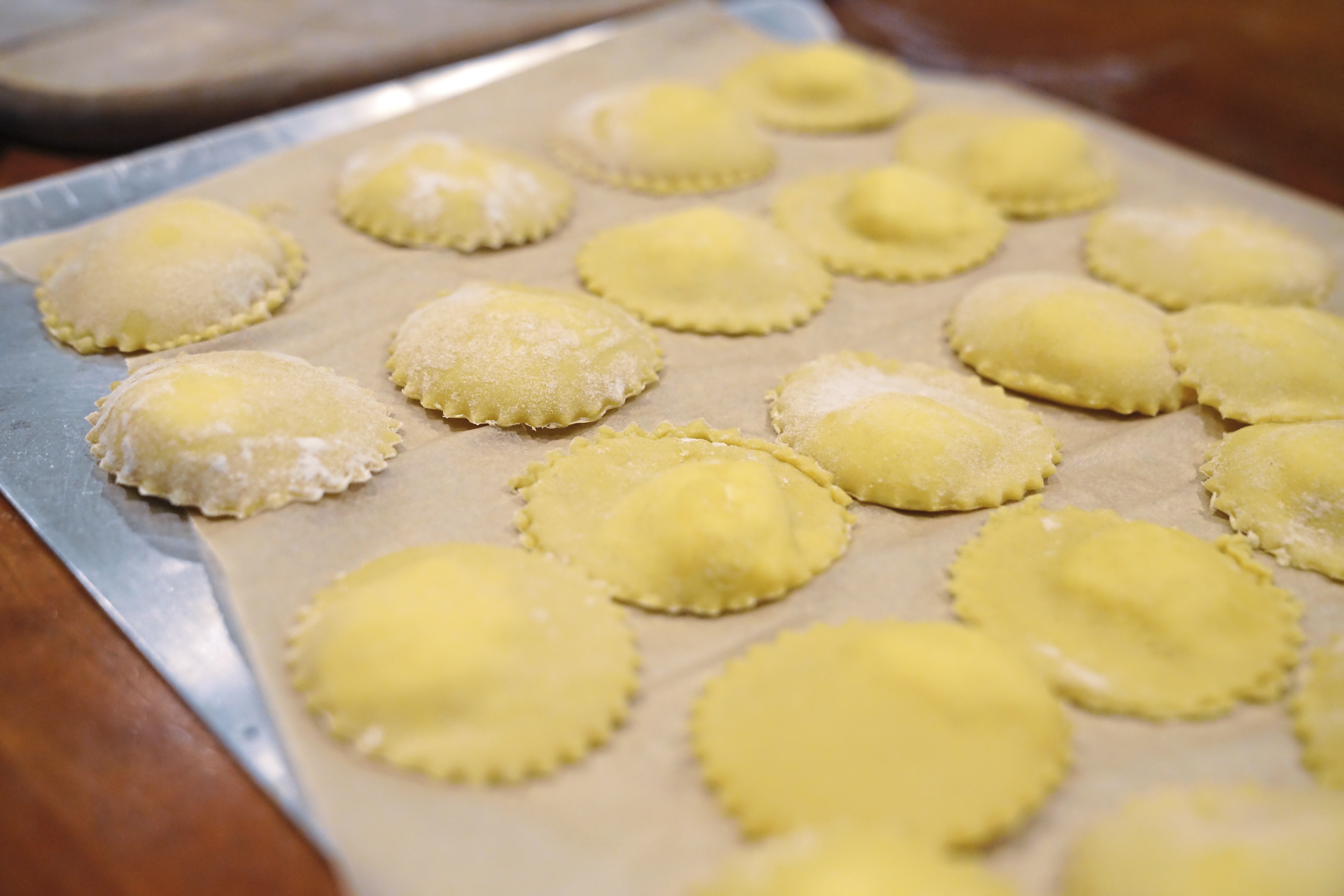
Bring a large pot of salted water to a boil over high heat. Add half the ravioli and cook until the ravioli float, stirring occasionally, about 3-4 minutes. Drain into a large bowl and cook the remaining ravioli.
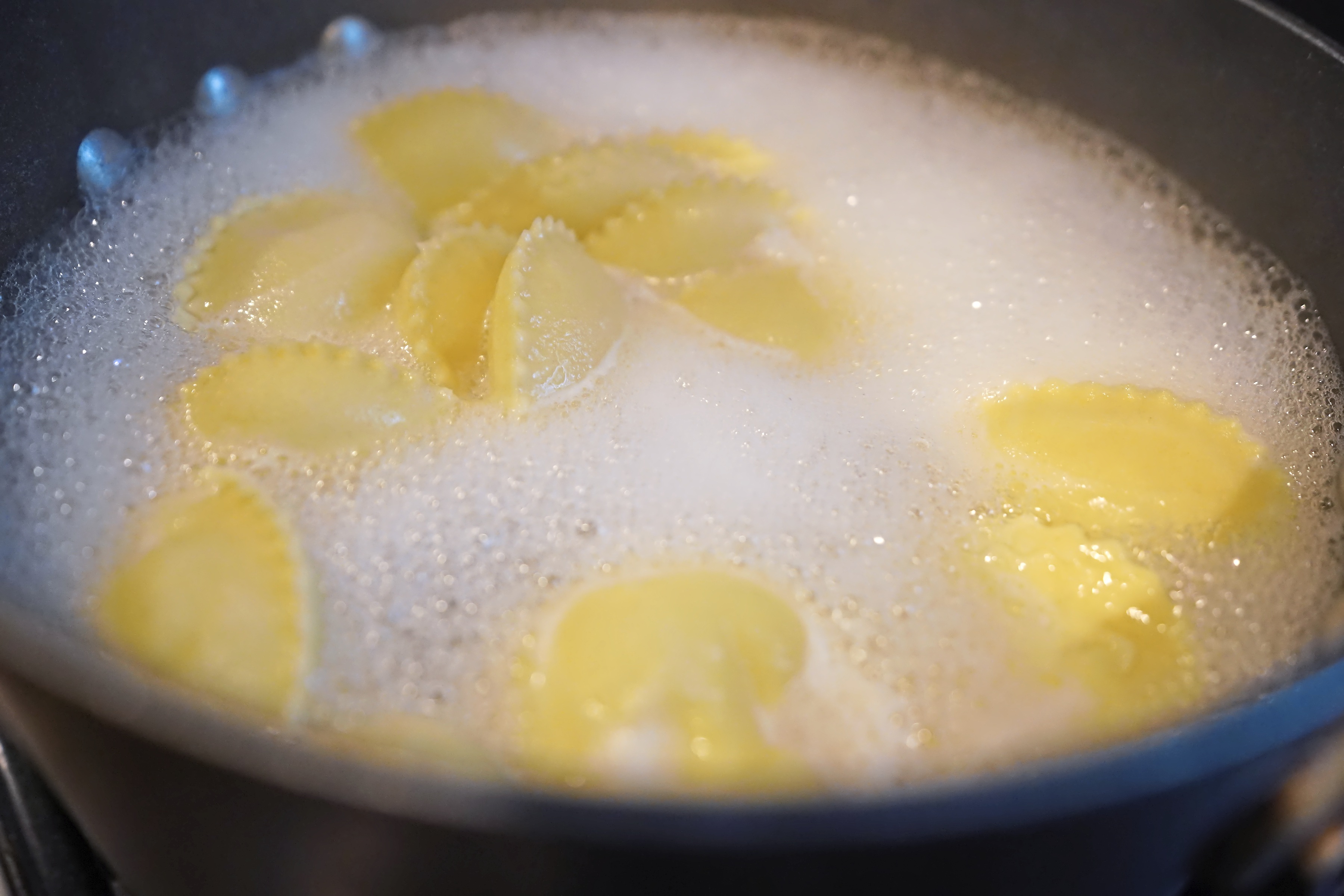
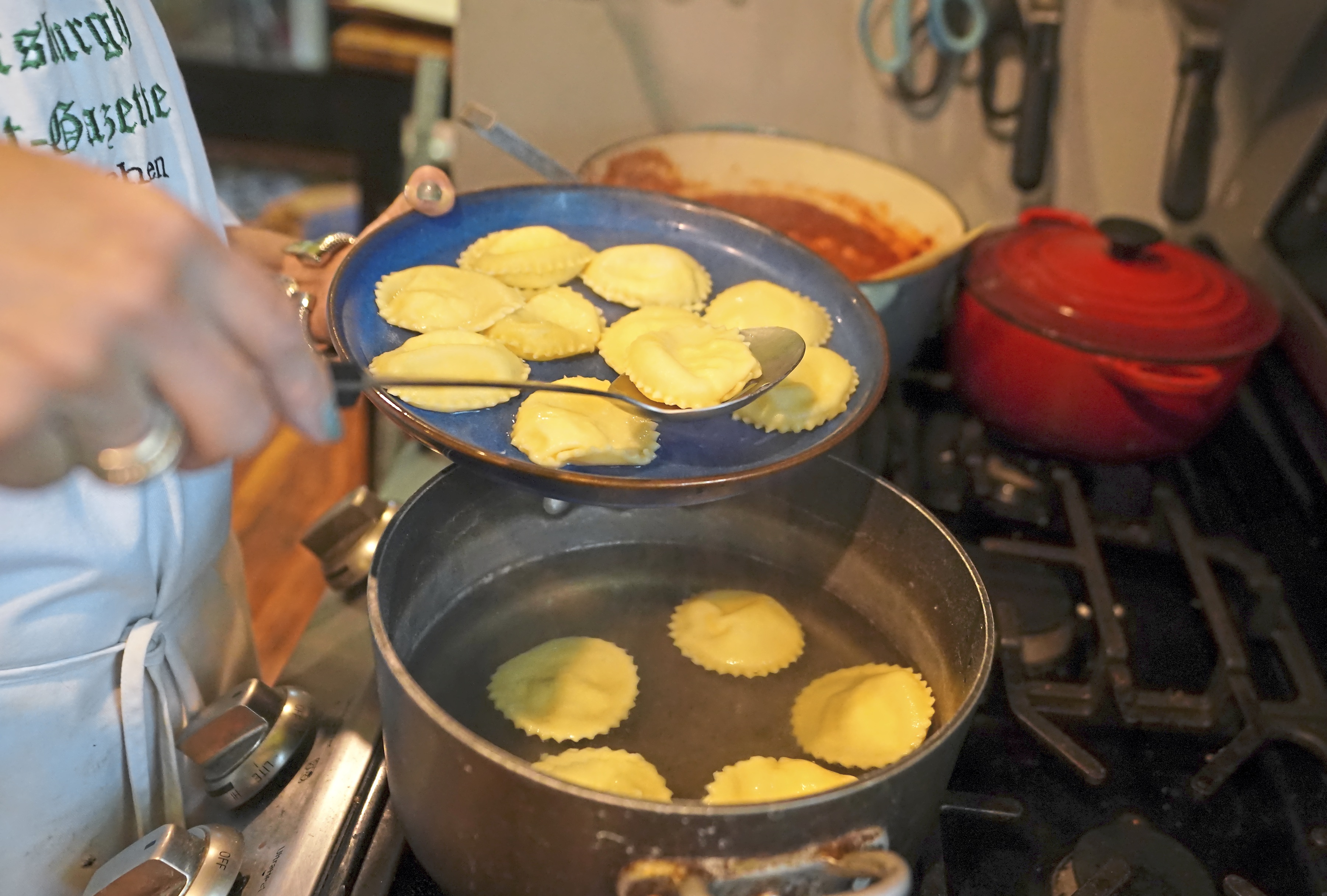
Serve ravioli topped with tomato sauce and a generous amount of grated Parmesan.
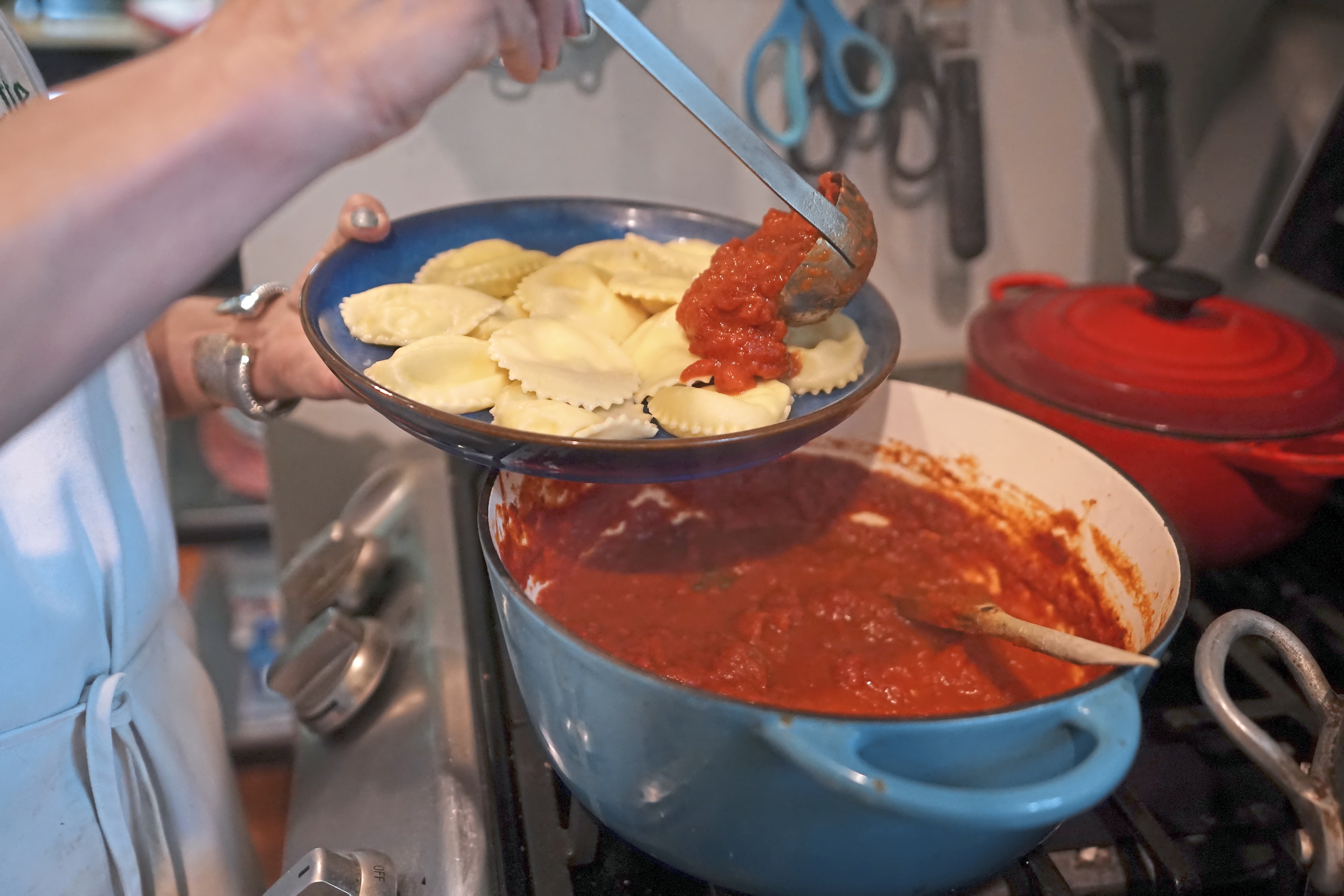
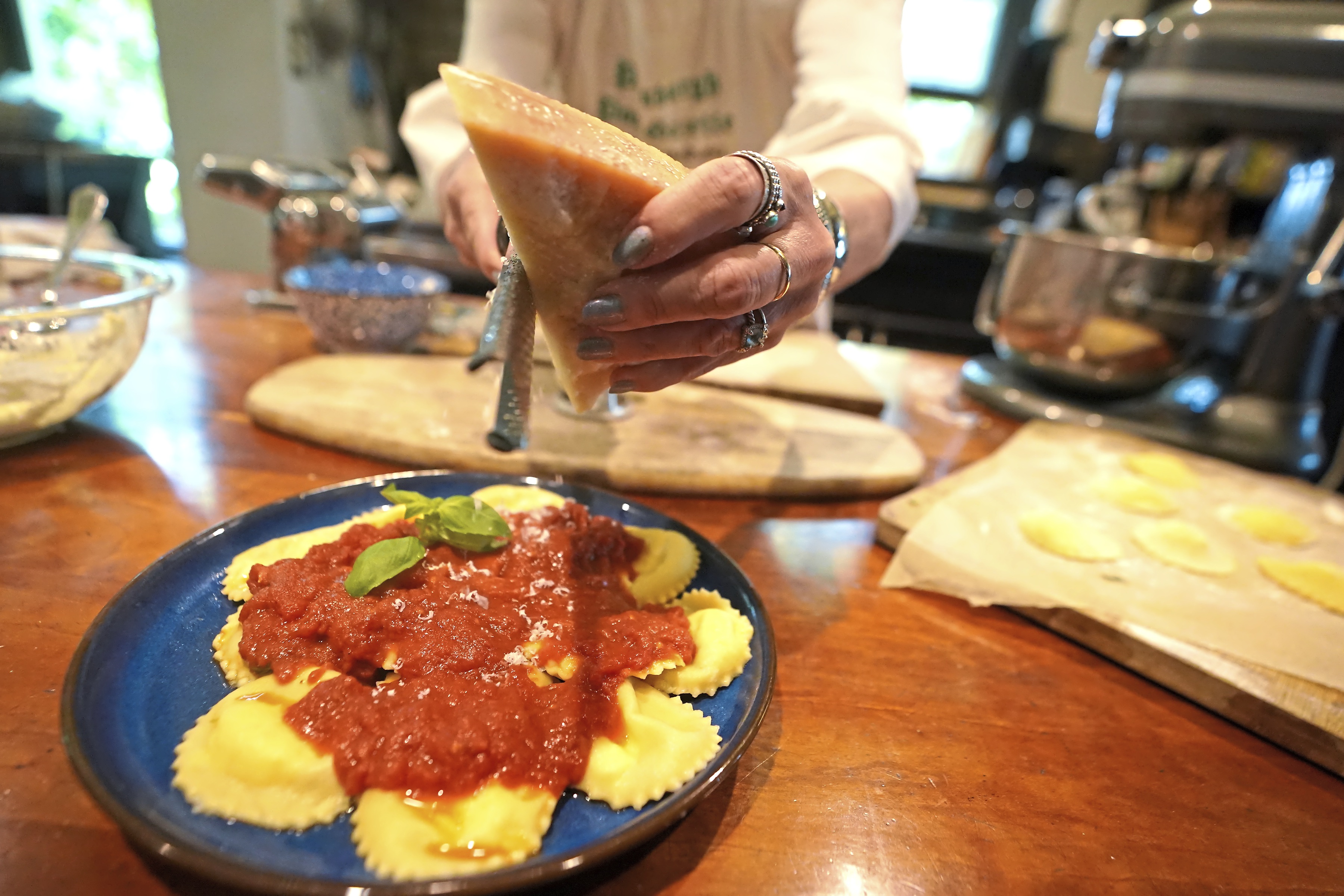
Serves 6.
Gretchen McKay: gmckay@post-gazette.com.
Marcella Hazan’s Tomato Sauce
2 cups tomatoes, in addition to their juices
5 tablespoons butter
1 onion, peeled and cut in half
Salt
Combine the tomatoes, their juices, the butter and the onion halves in a saucepan. Add a pinch or two of salt. Place over medium heat and bring to a simmer. Cook, uncovered, for about 45 minutes. Stir occasionally, mashing any large pieces of tomato with a spoon. Add salt as needed.
Discard the onion before tossing the sauce with pasta. This recipe makes enough sauce for a pound of pasta.
Hal B. Klein
Gretchen McKay
Hal B. Klein
Sebastian Foltz
John Colombo
James Hilston
Laura Malt Schneiderman
Advertisement
Advertisement